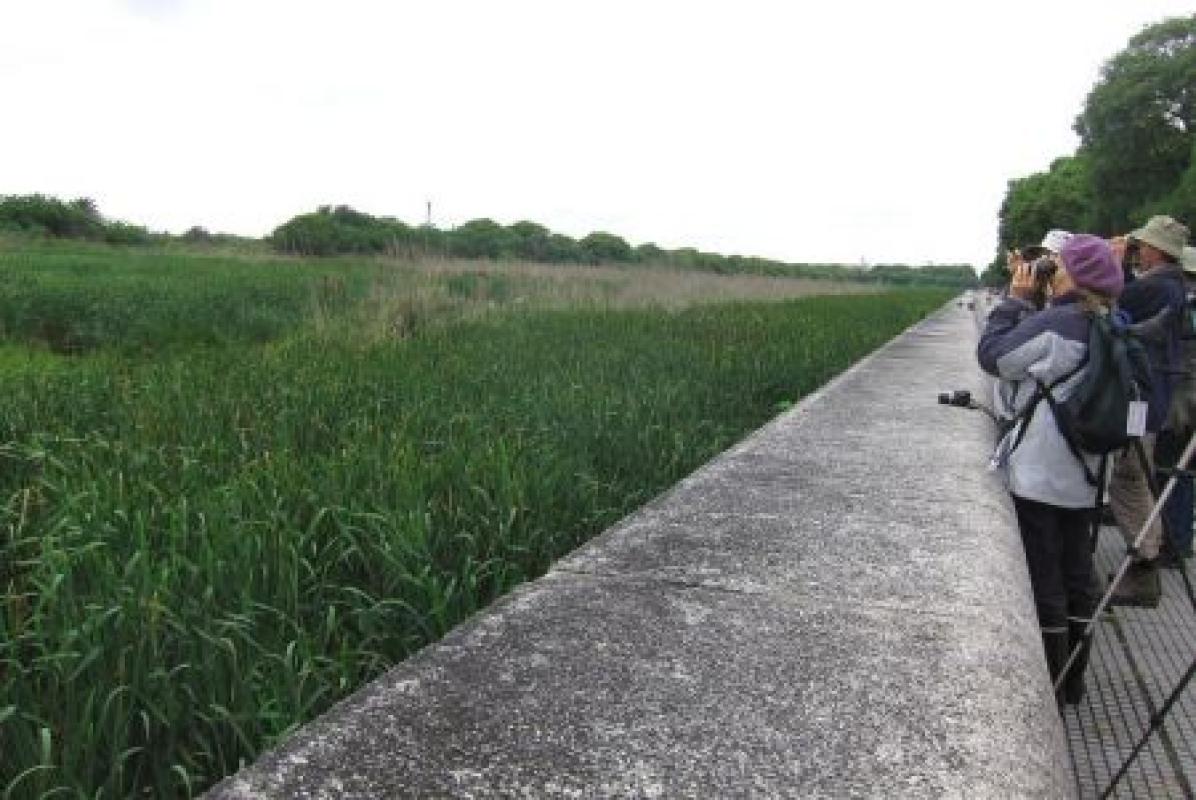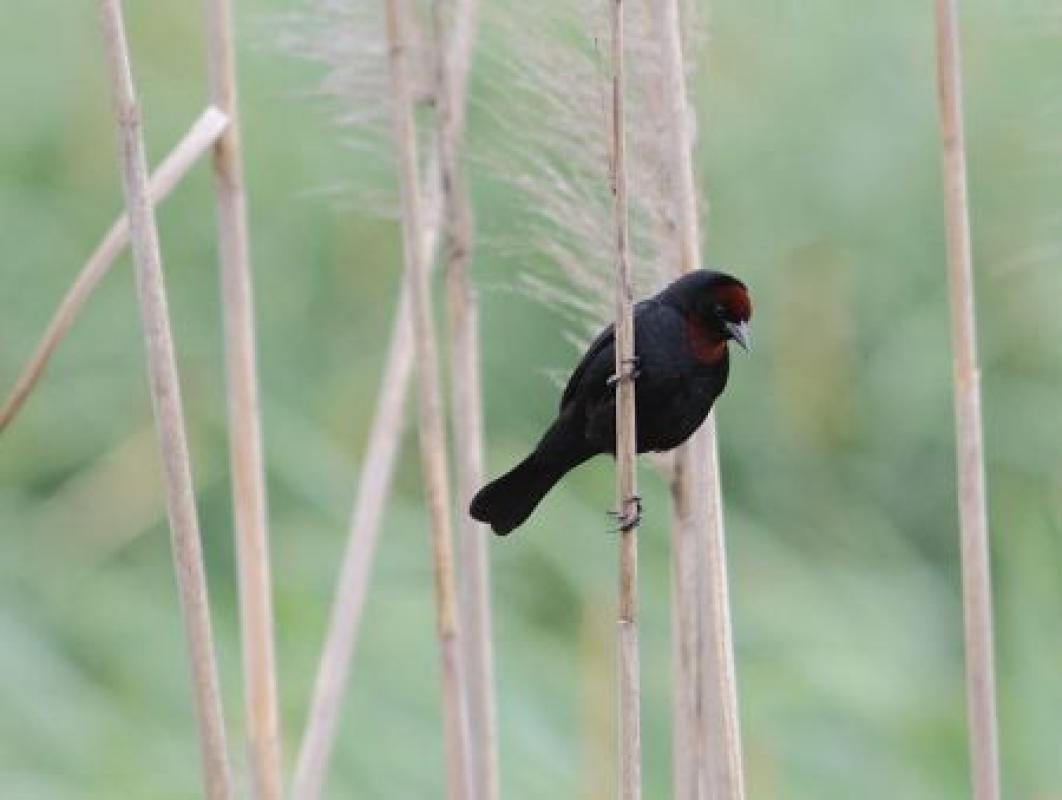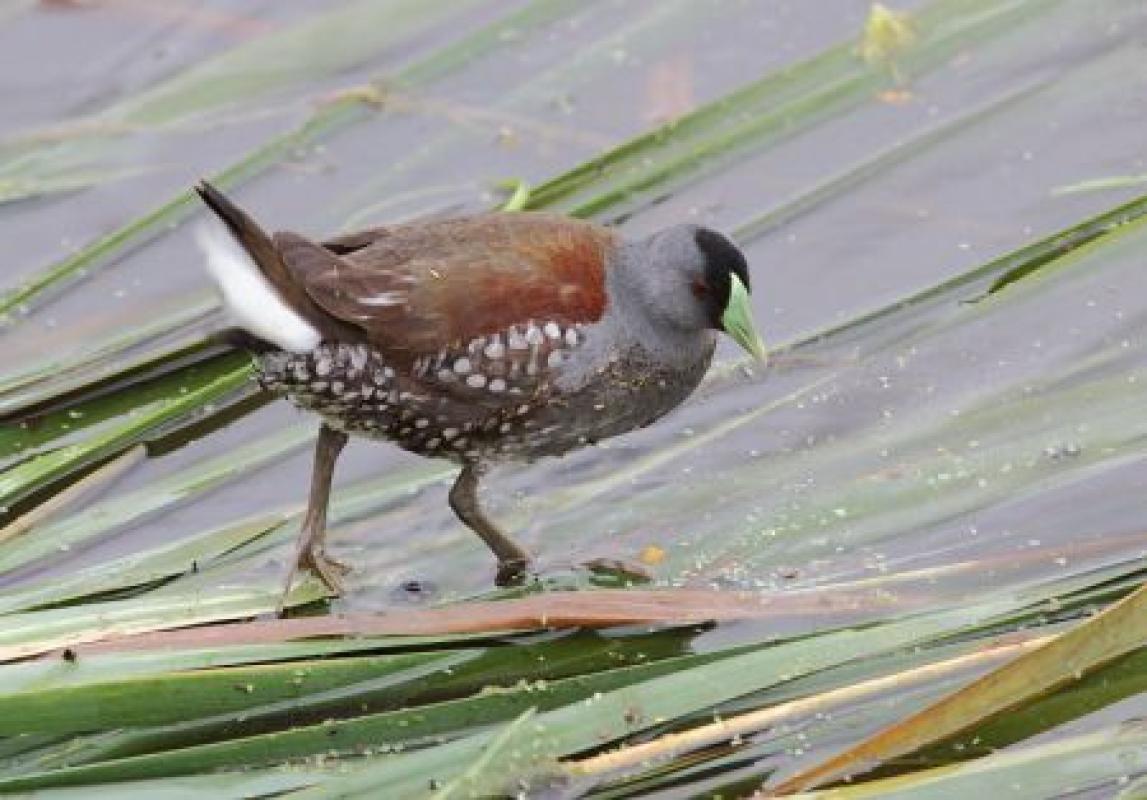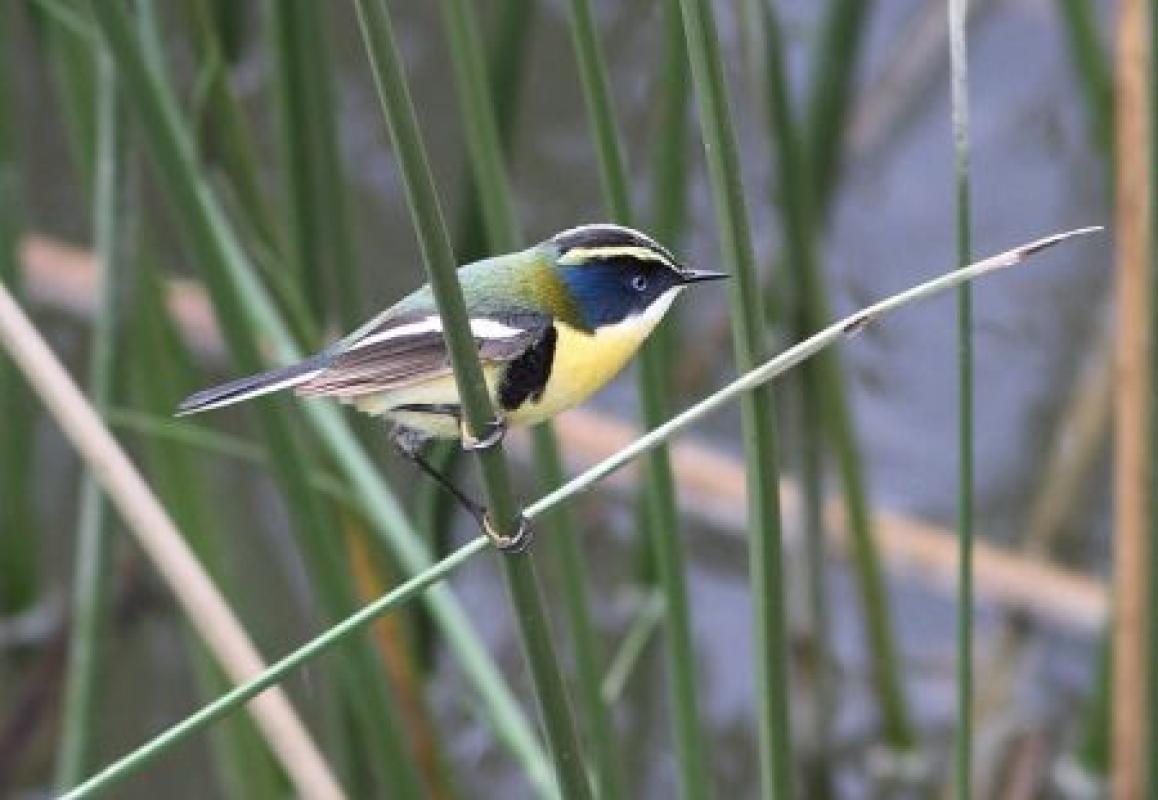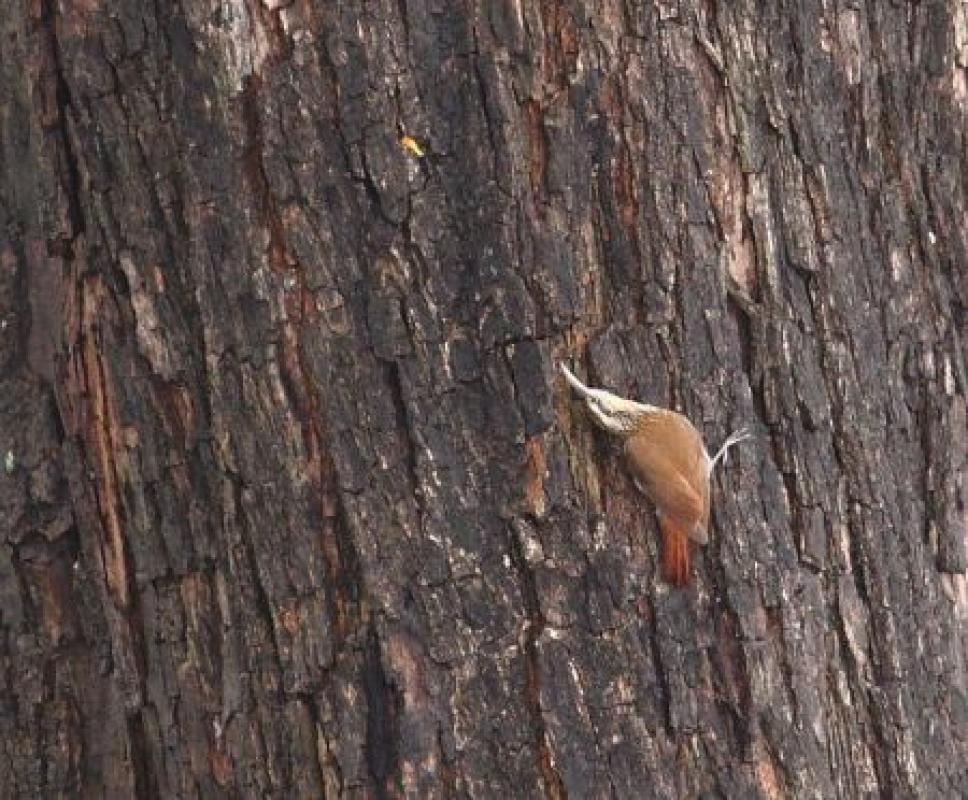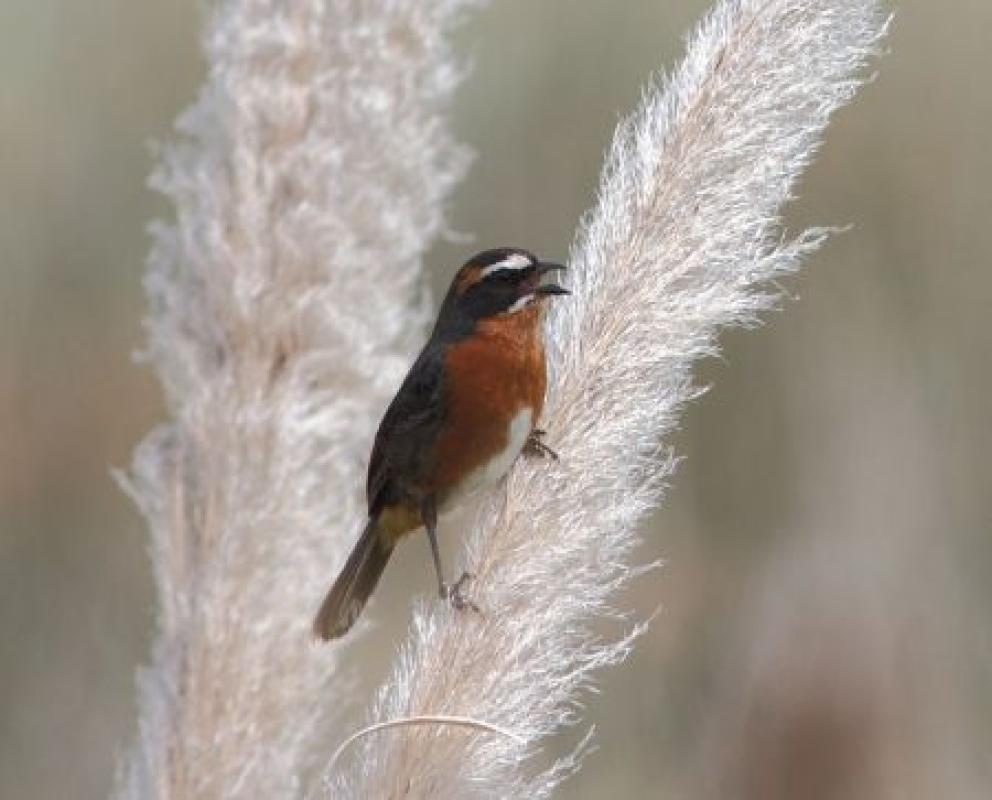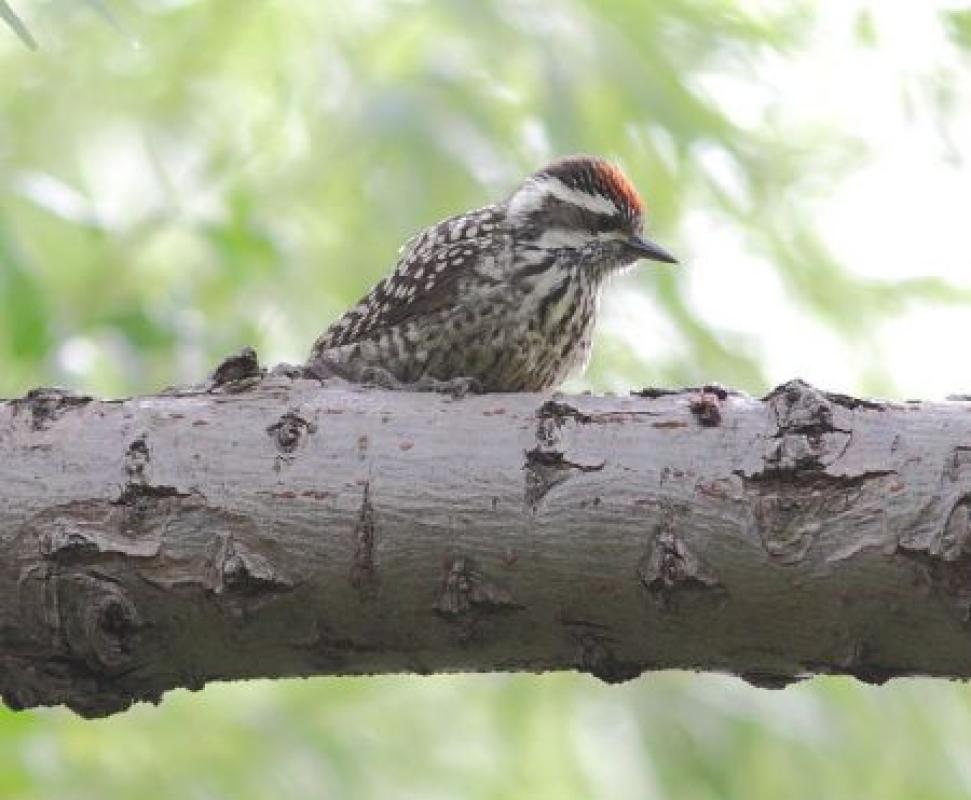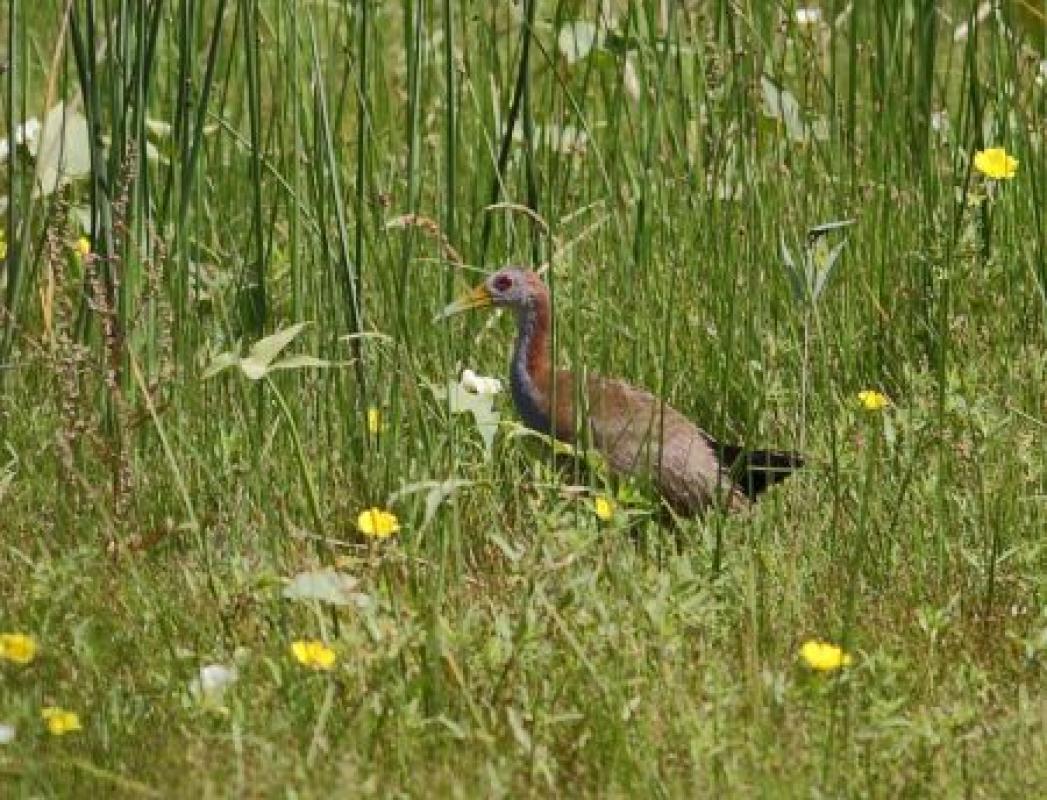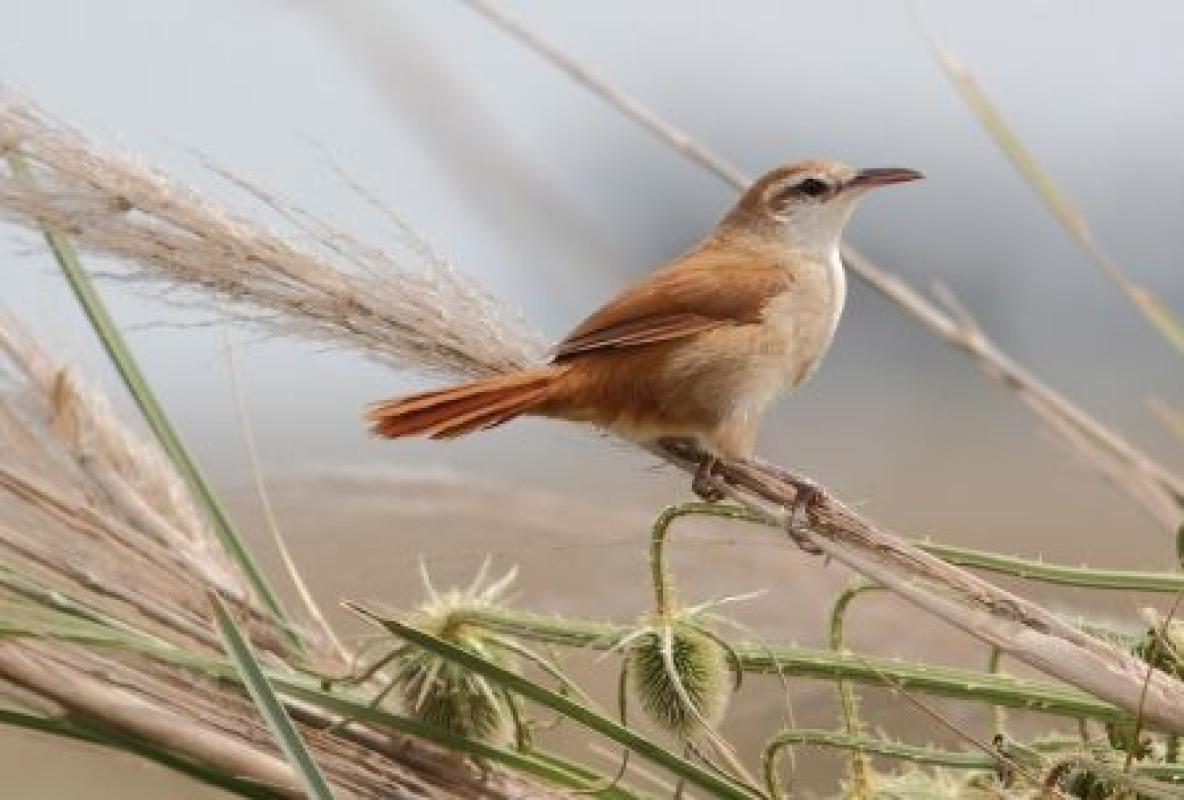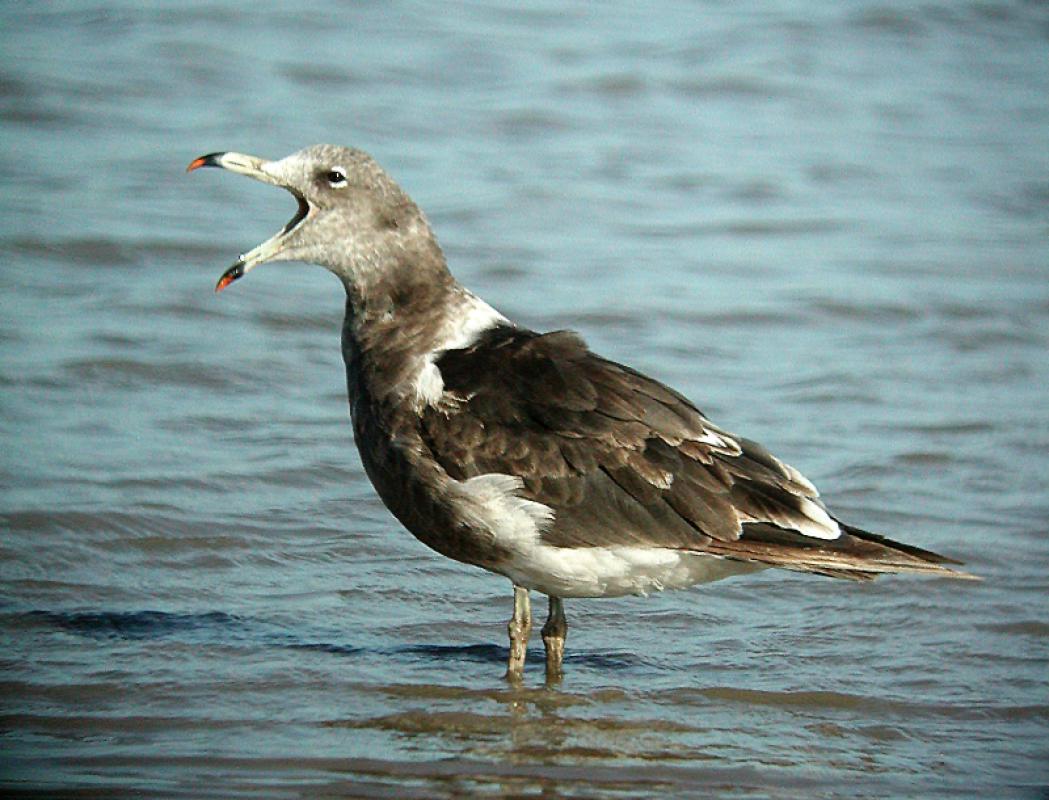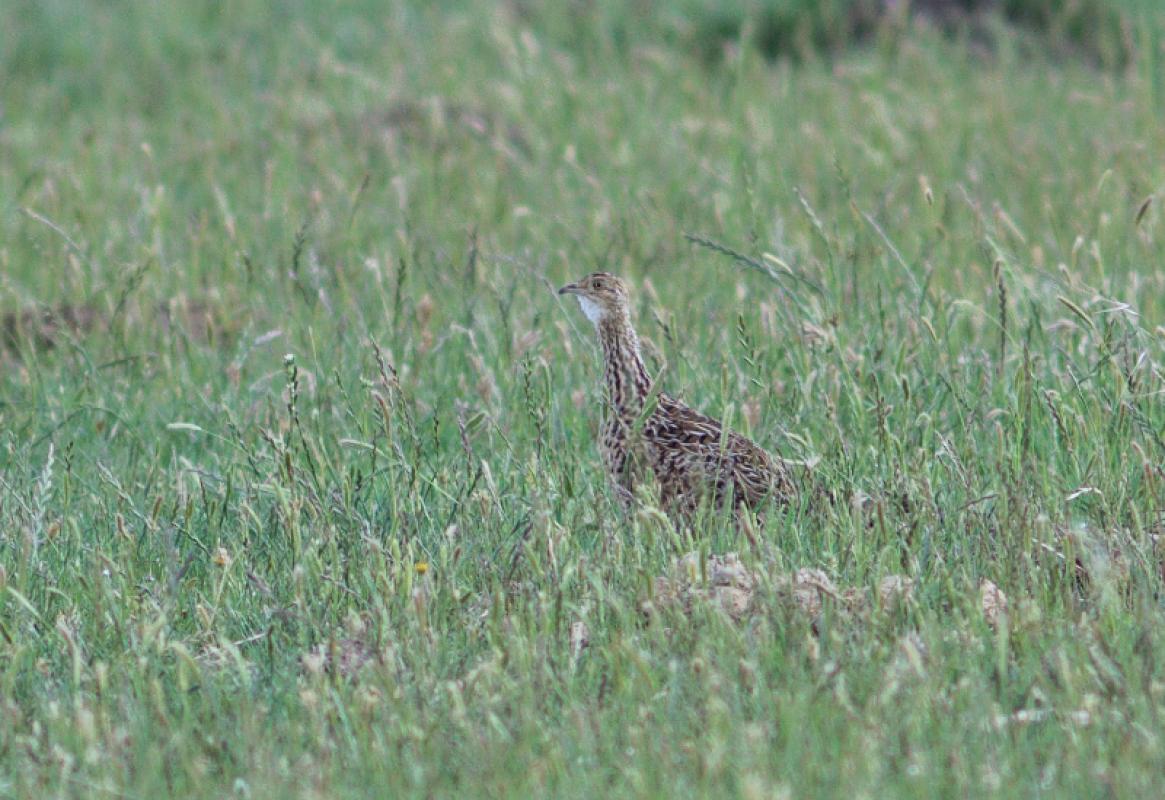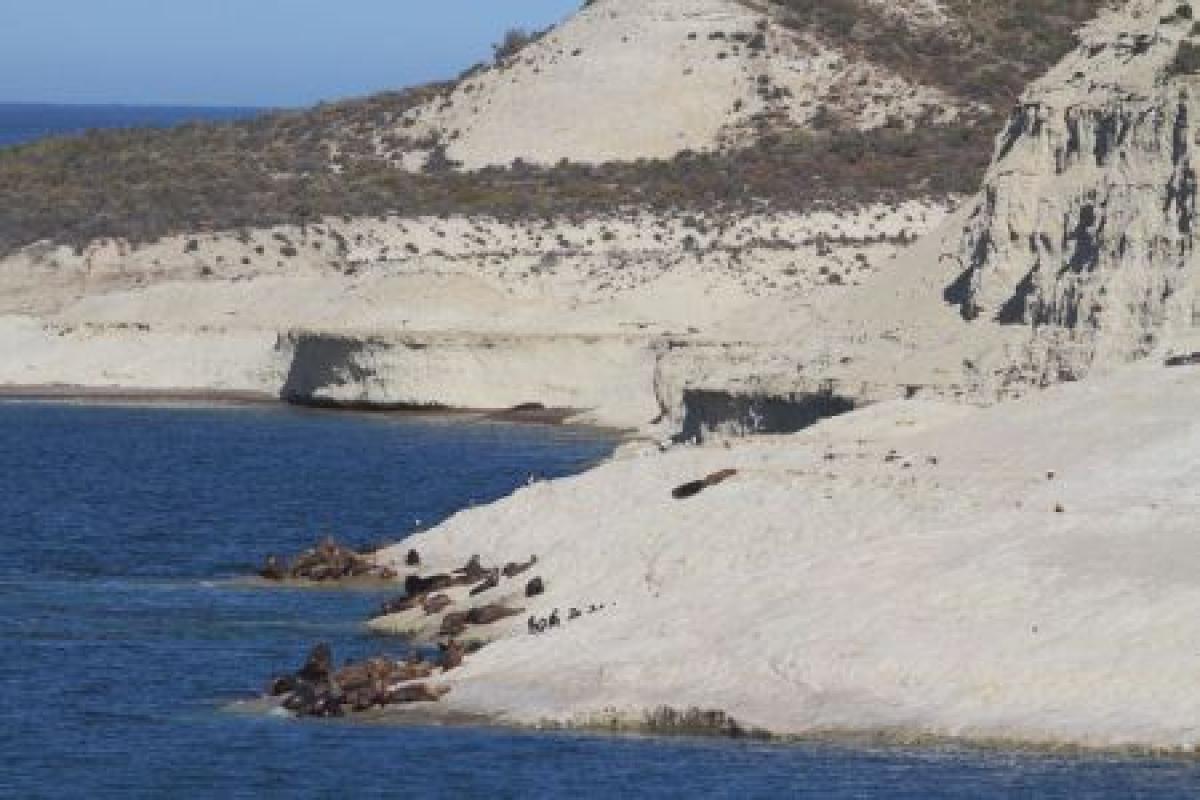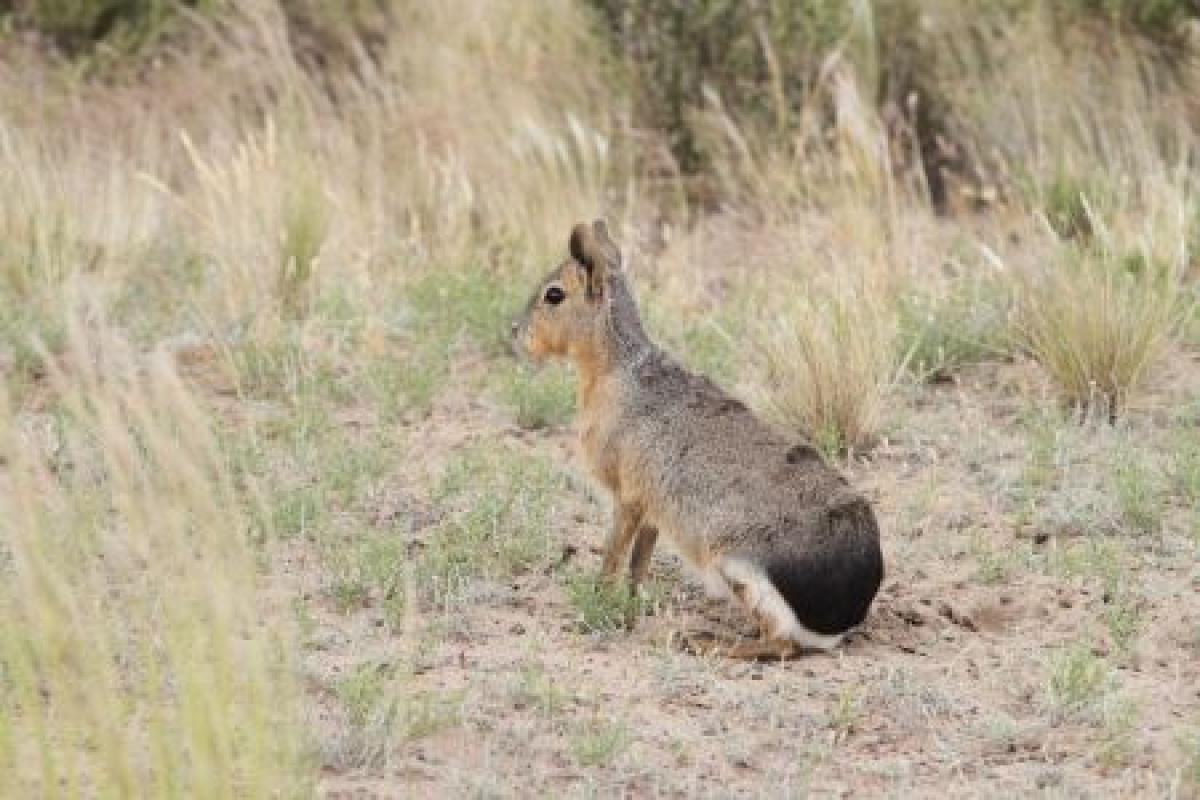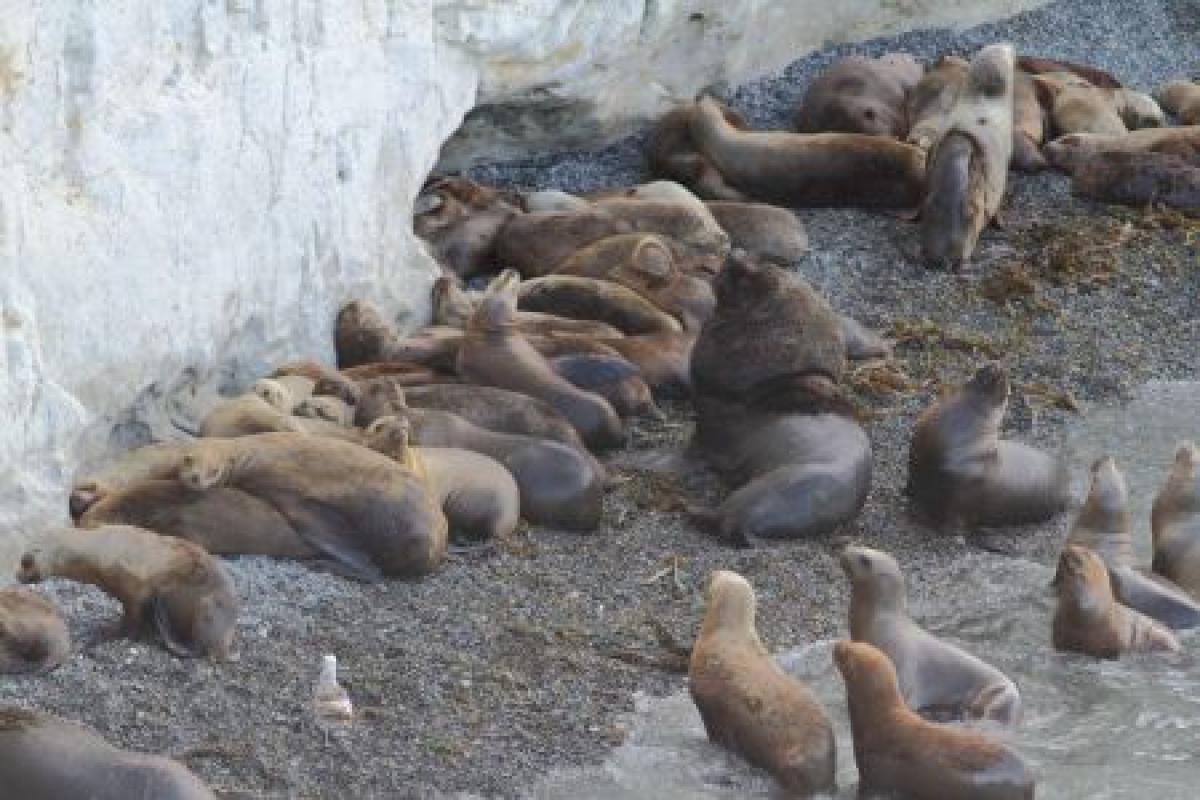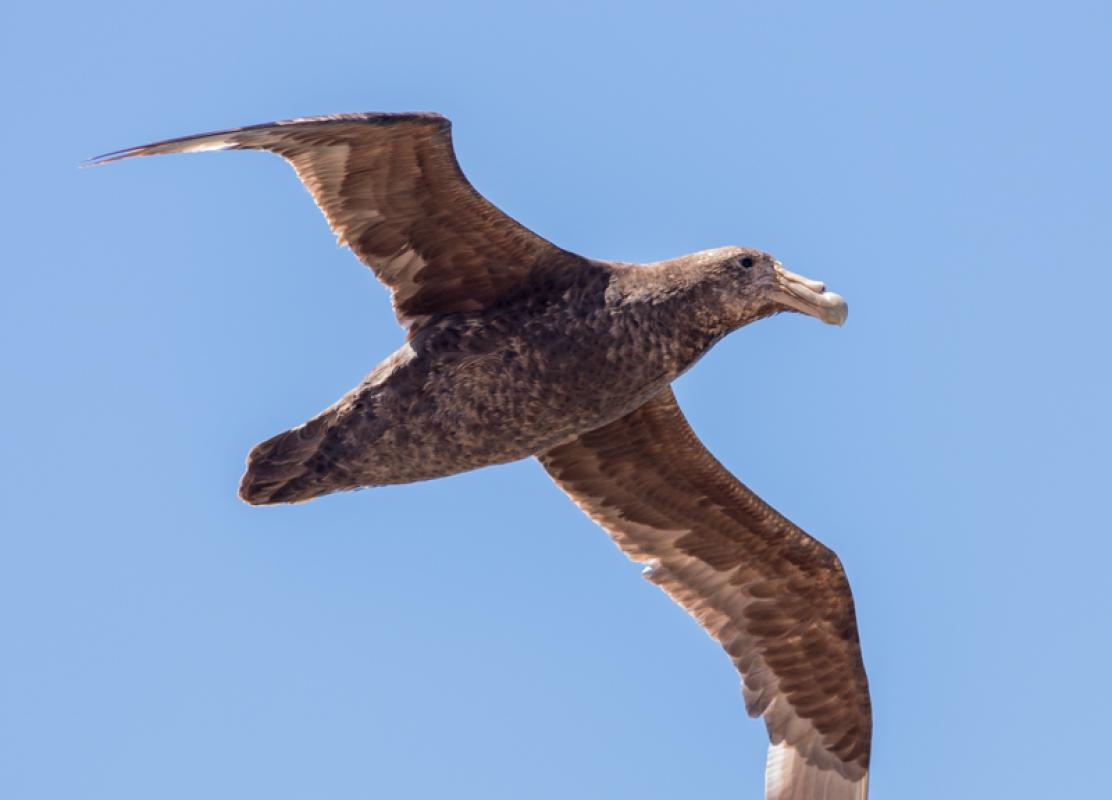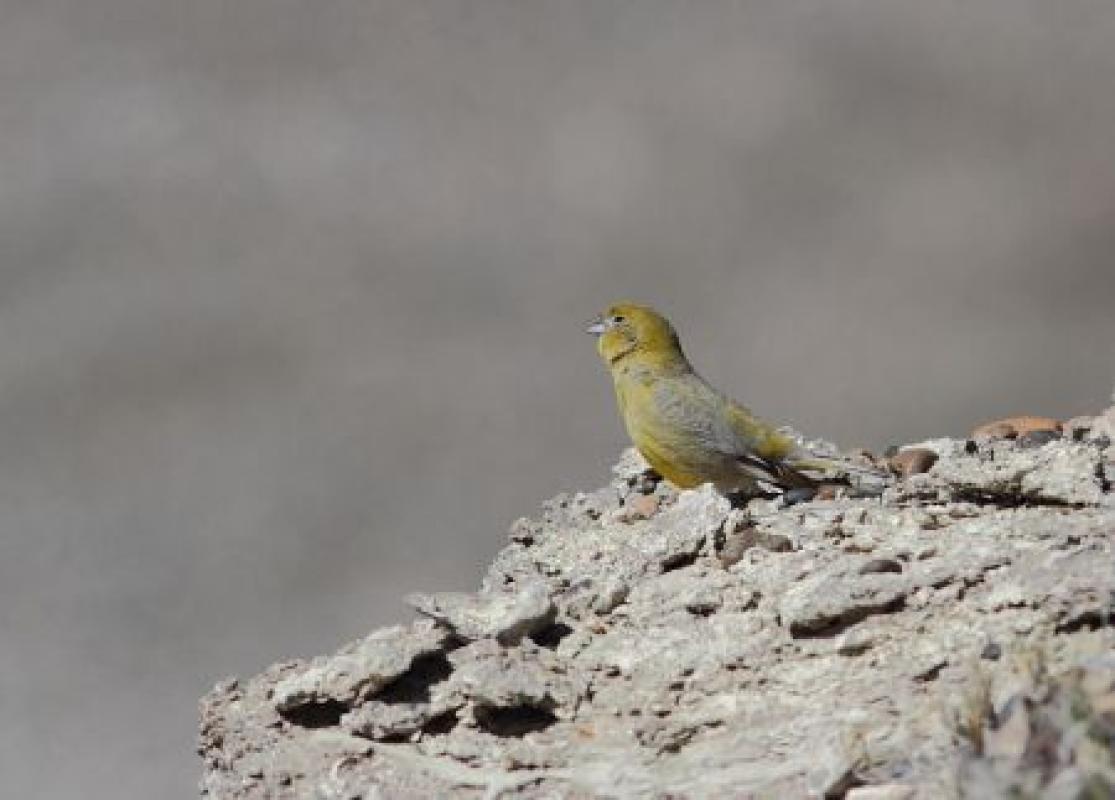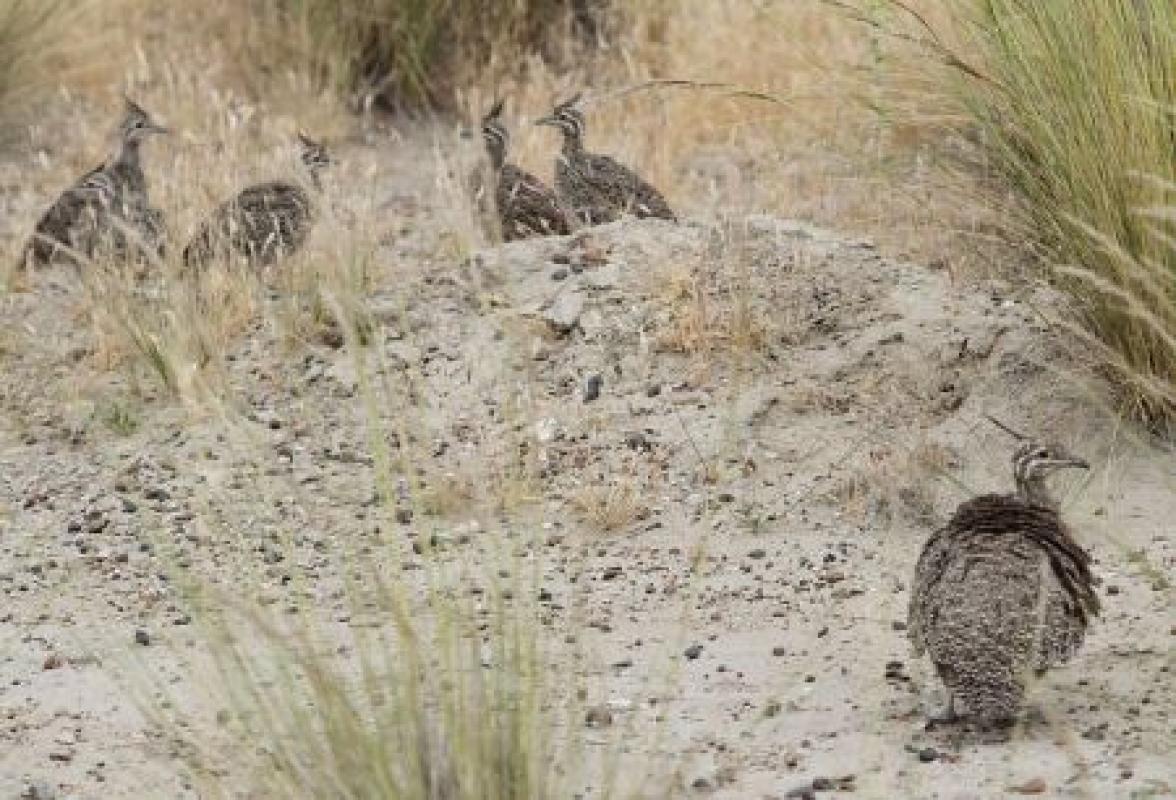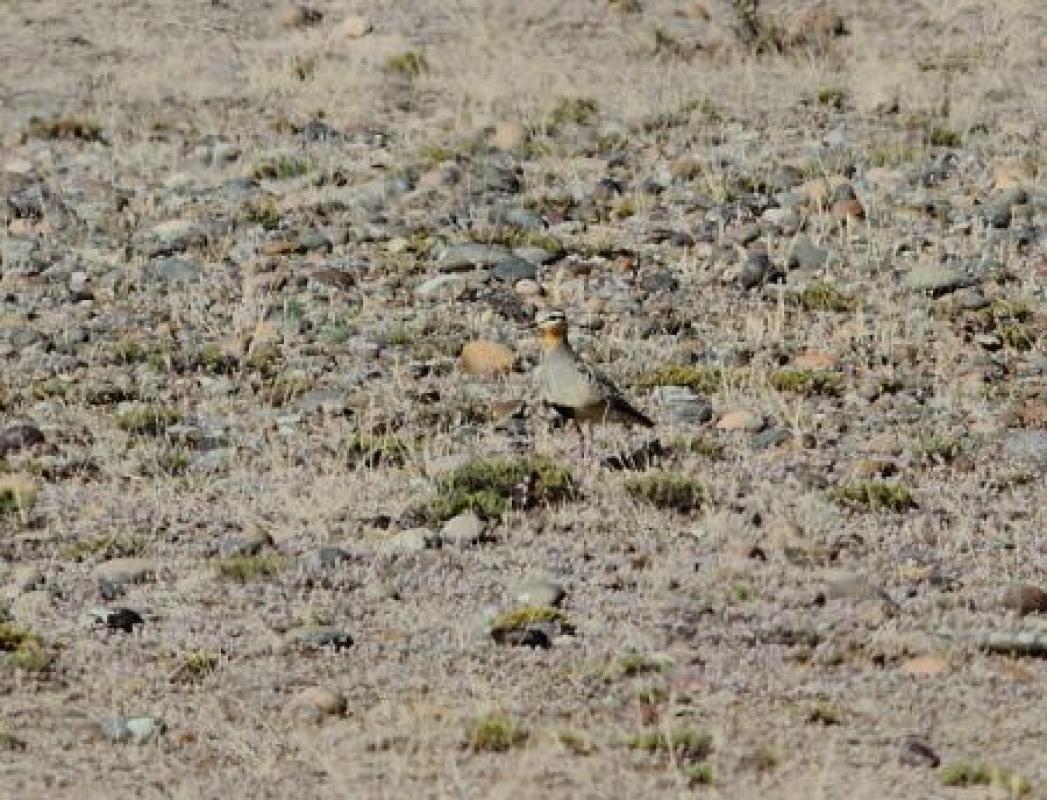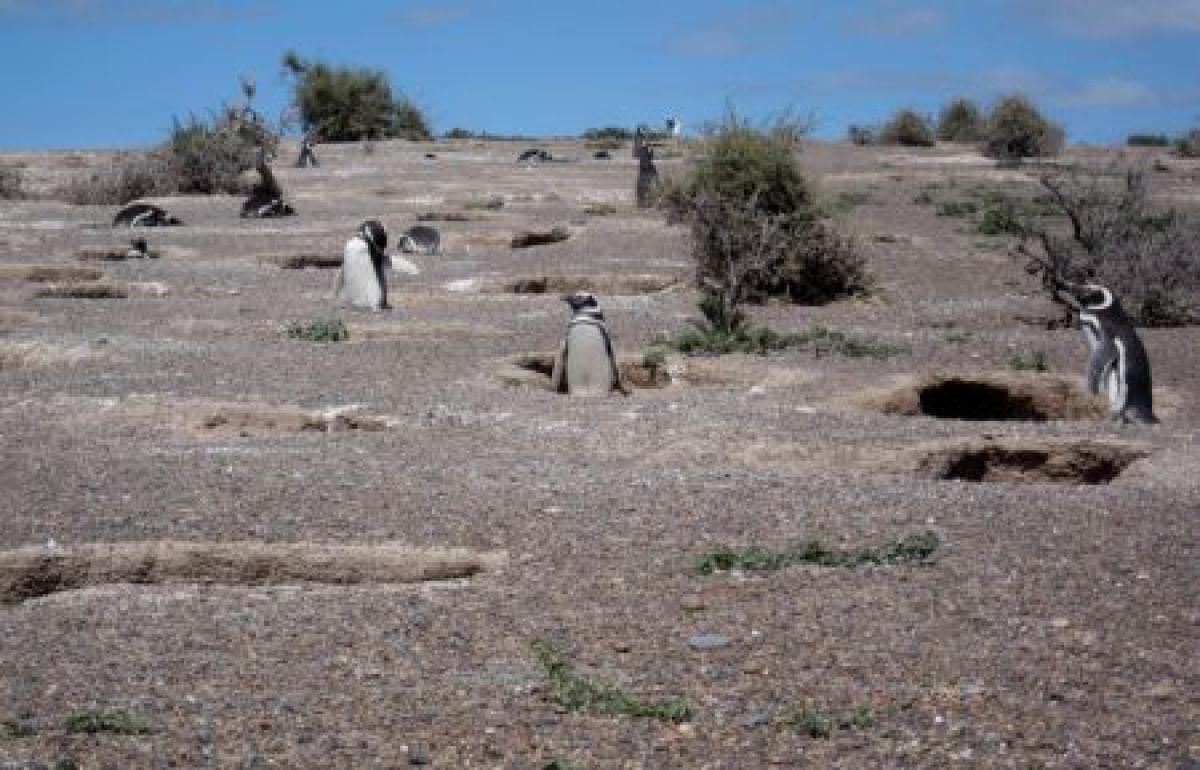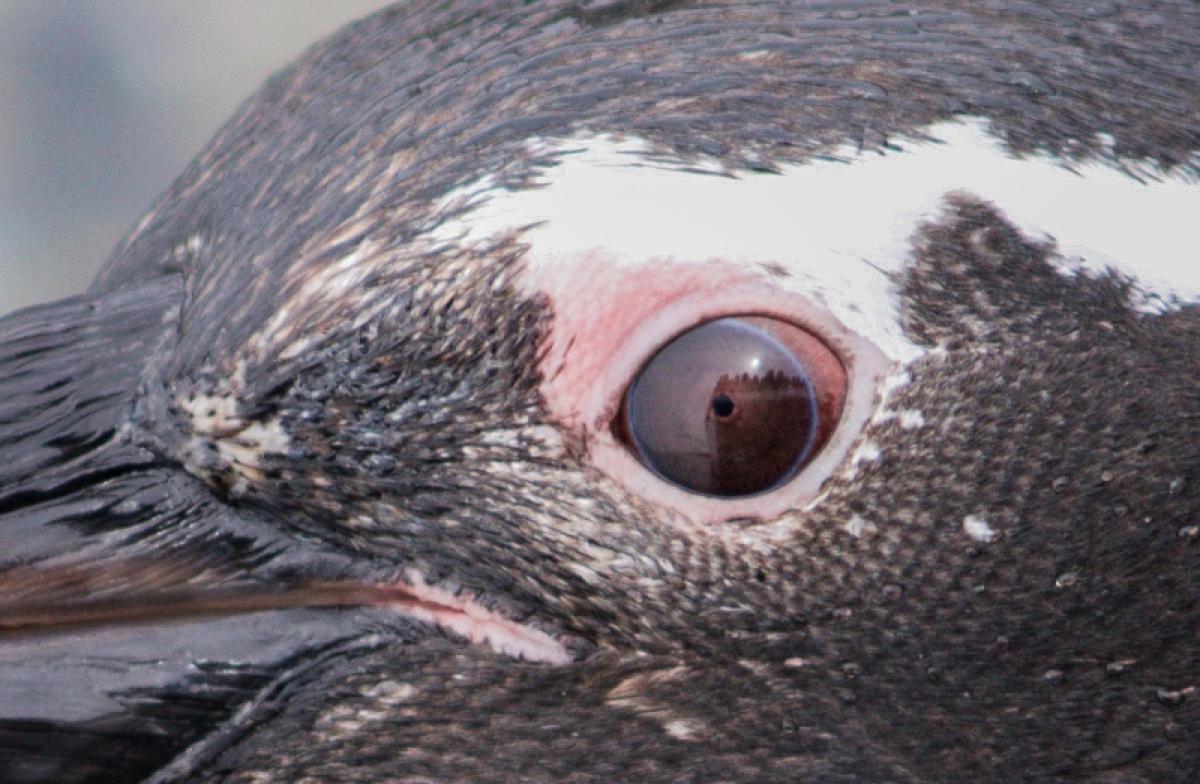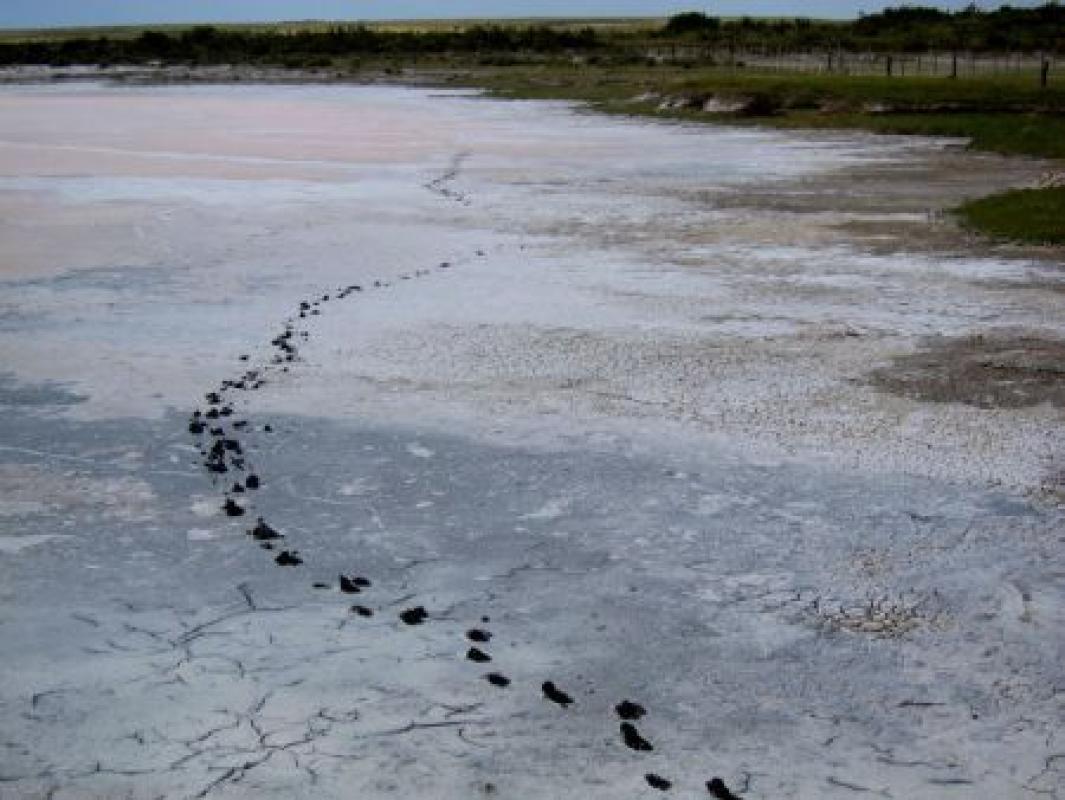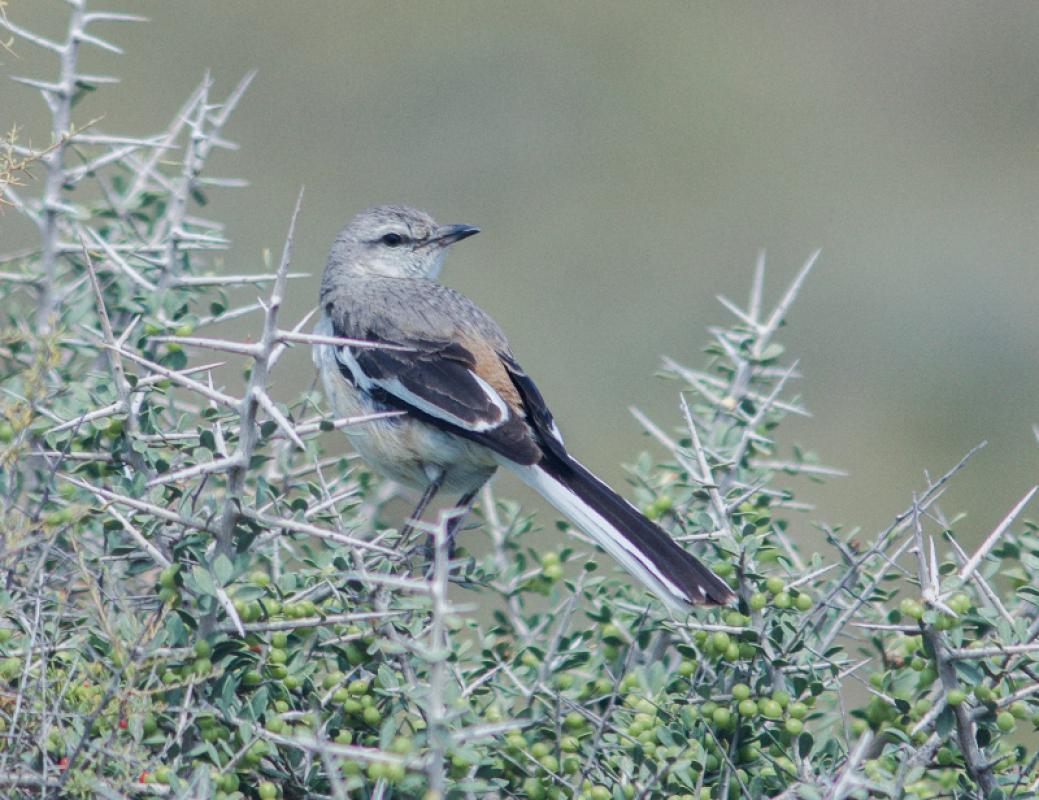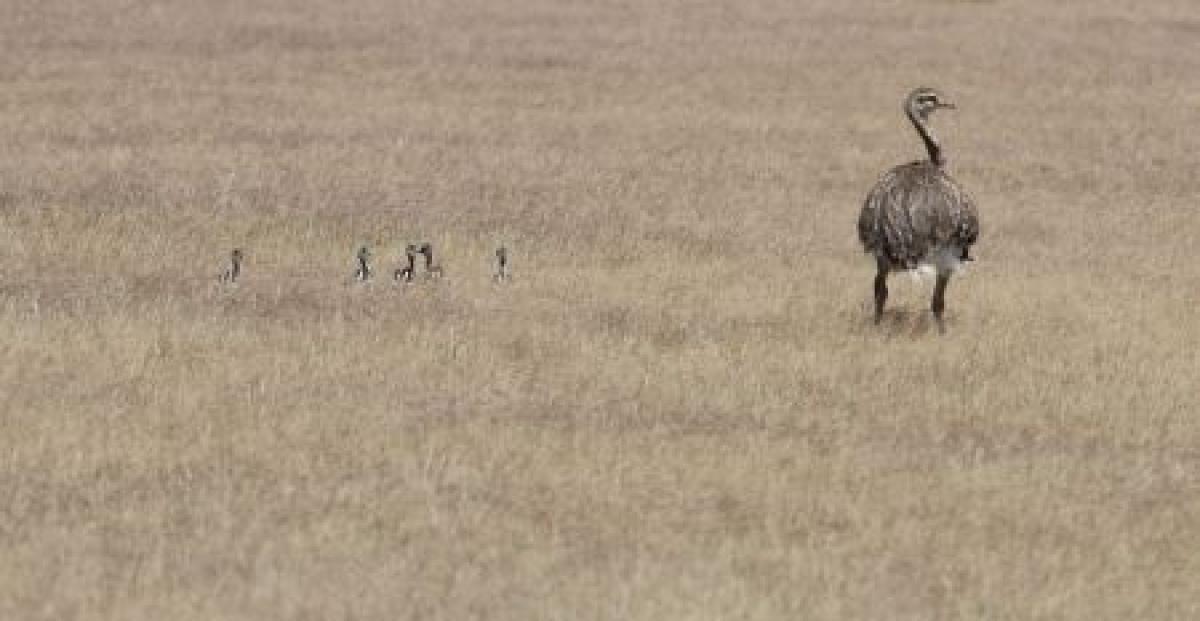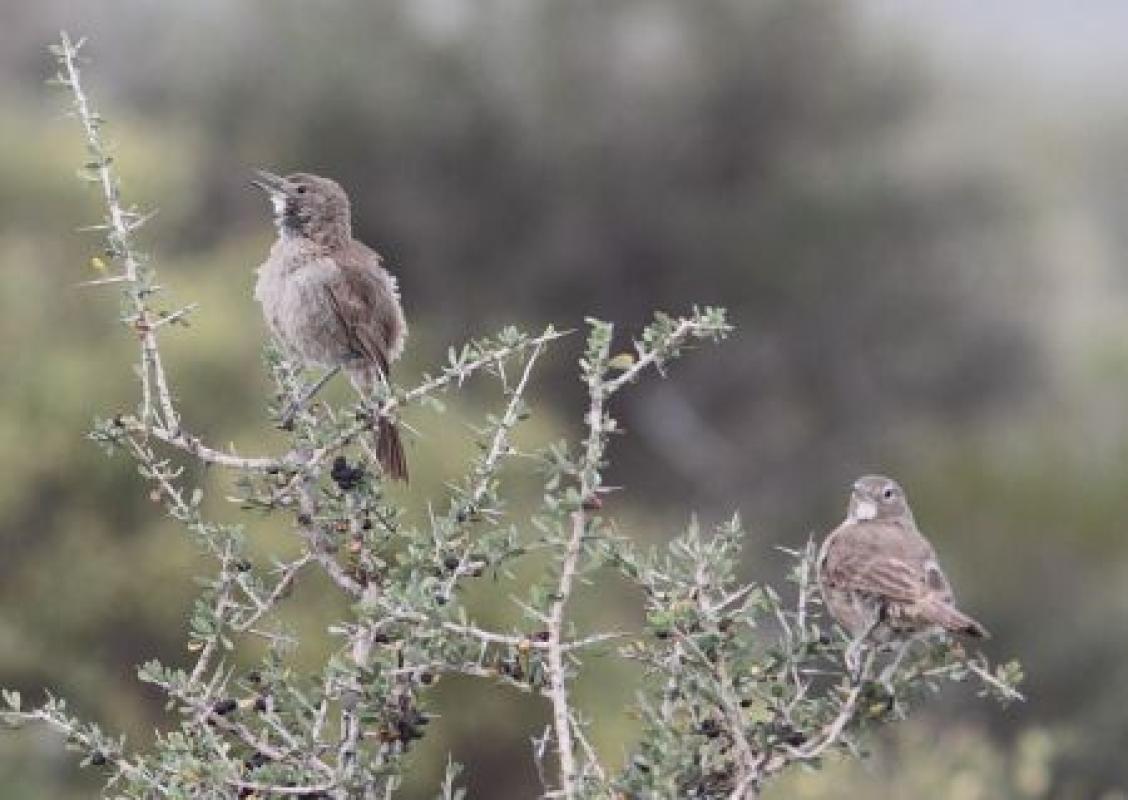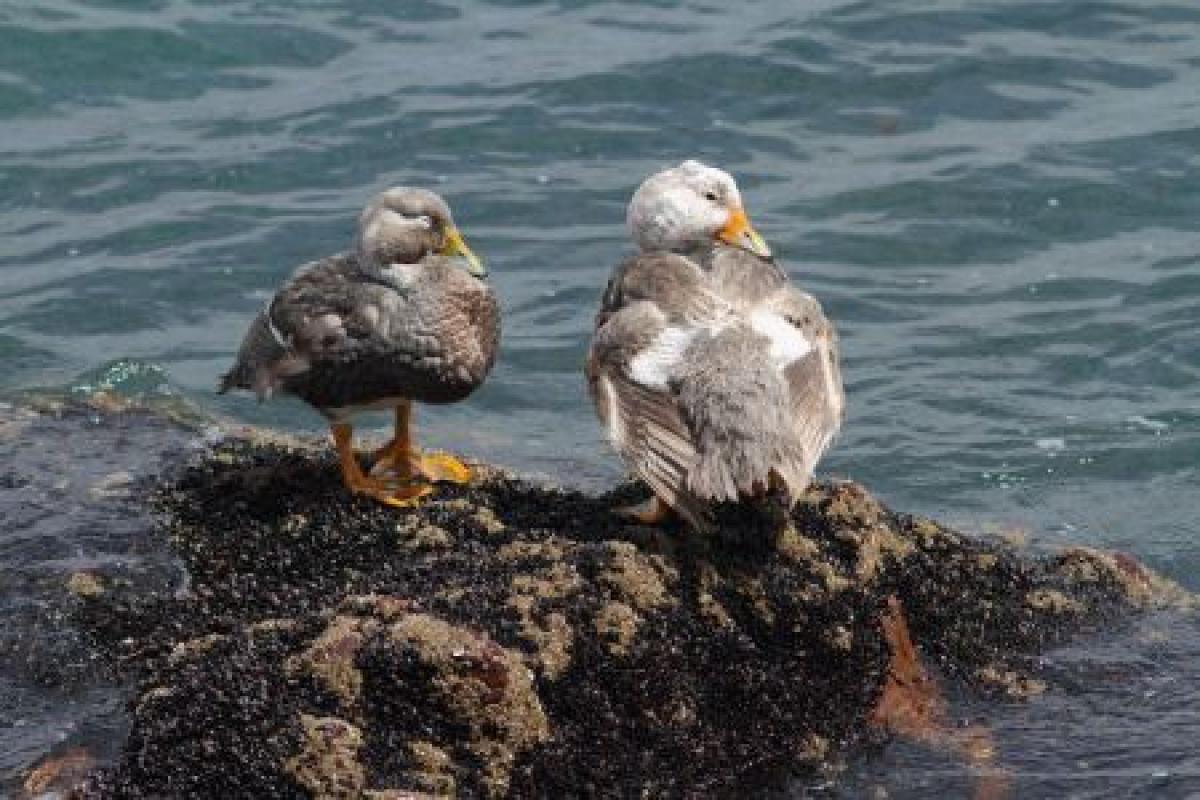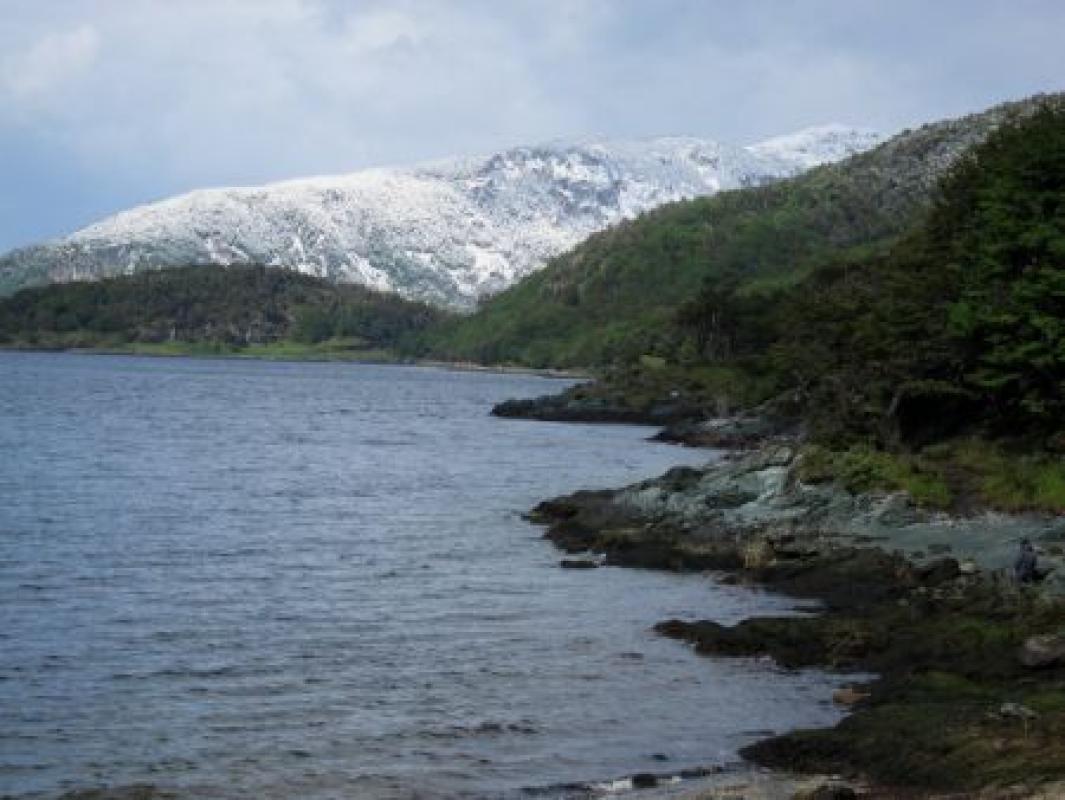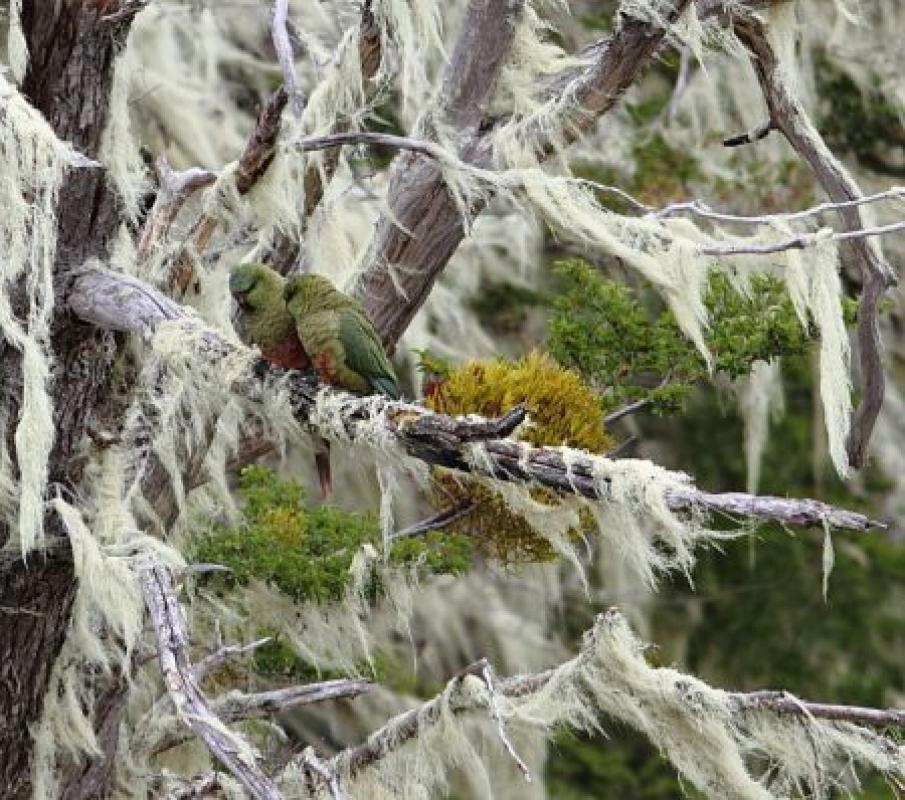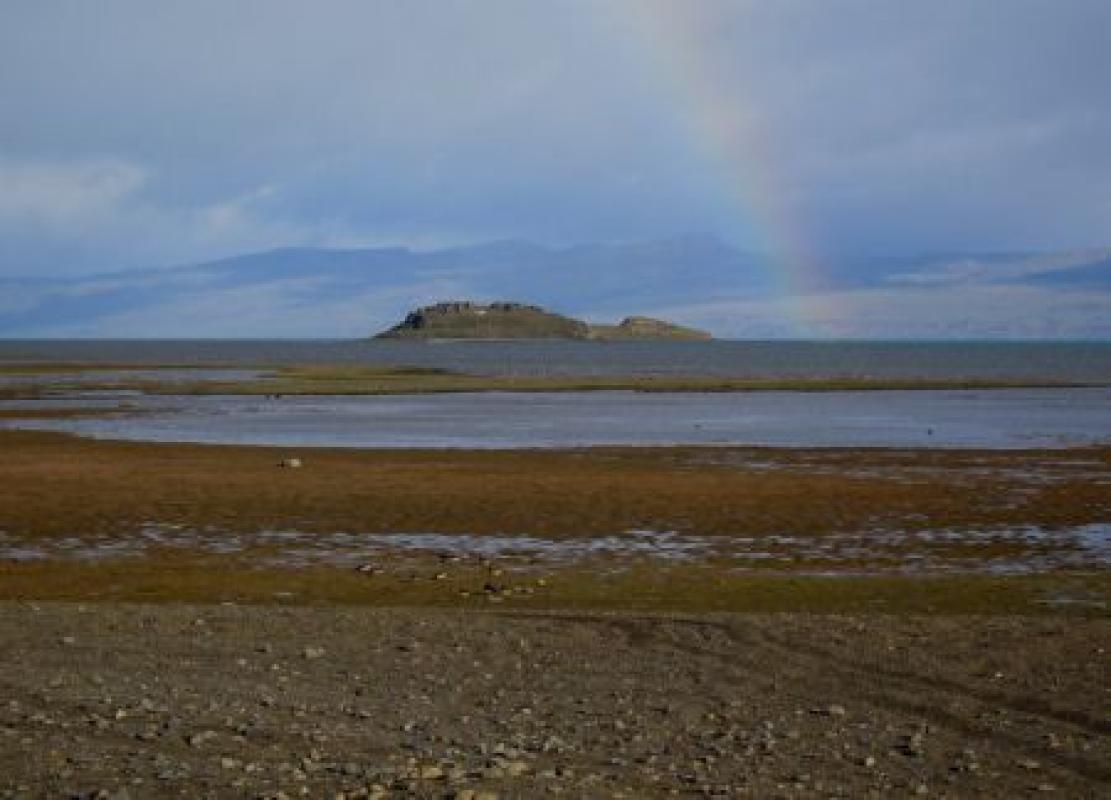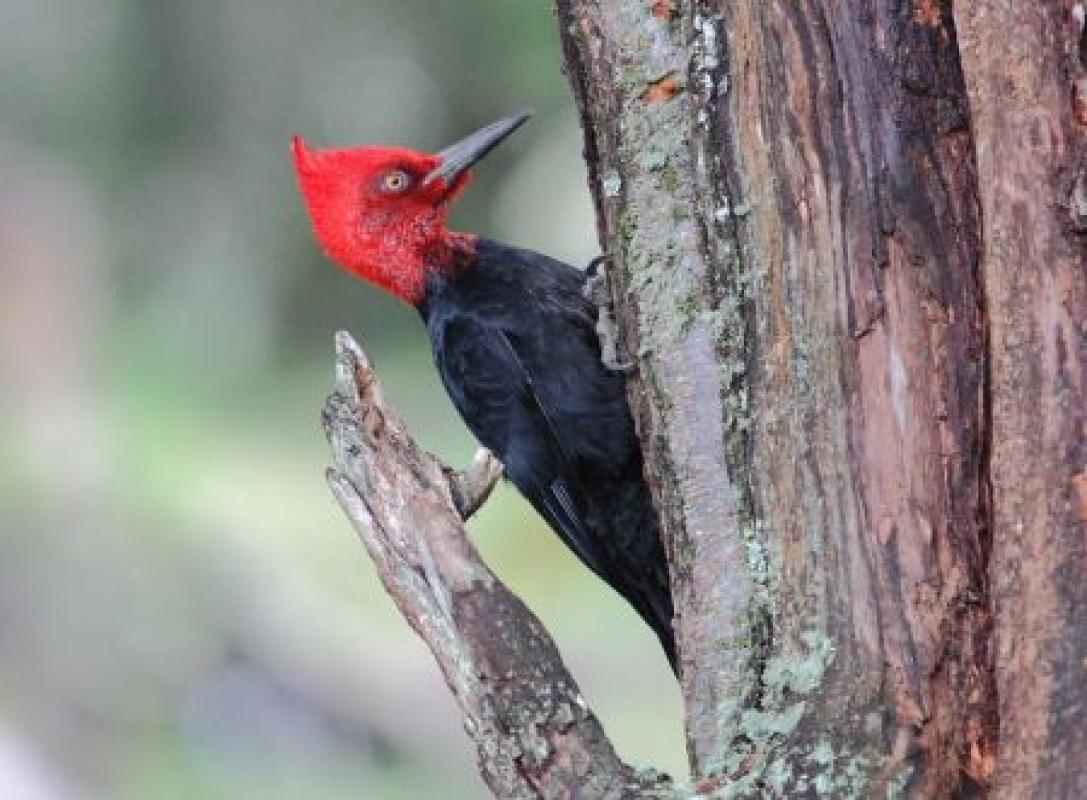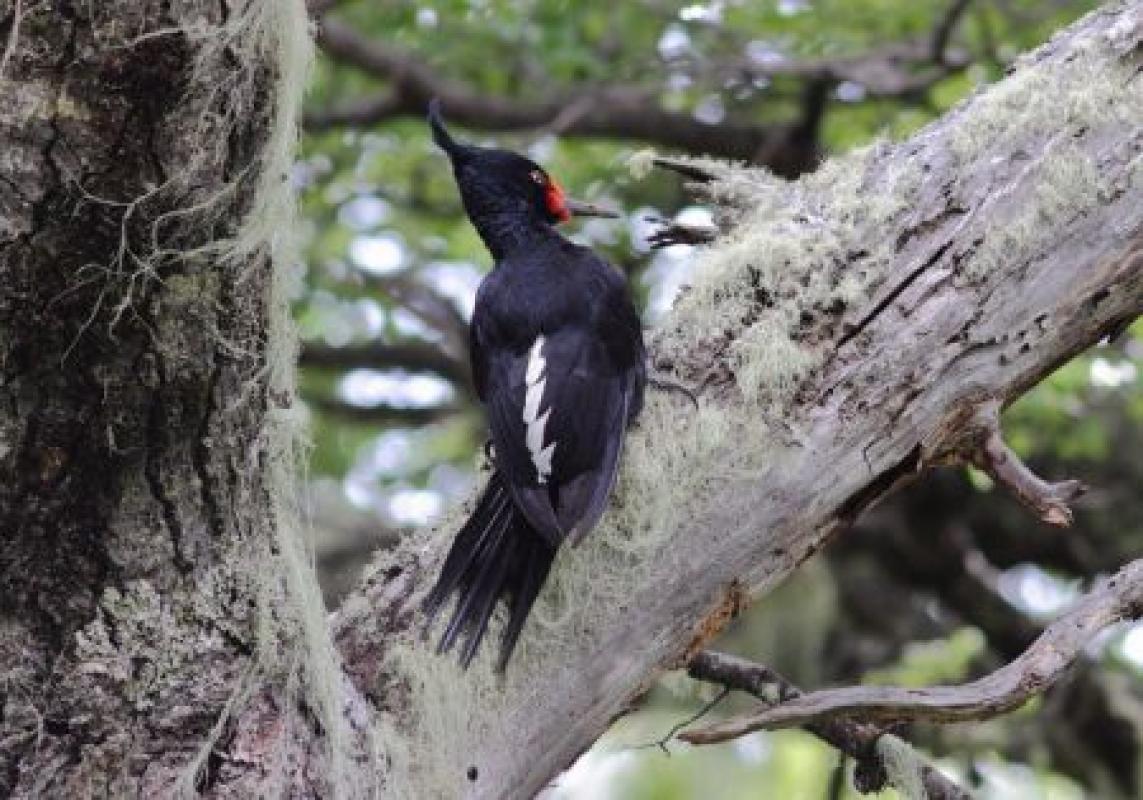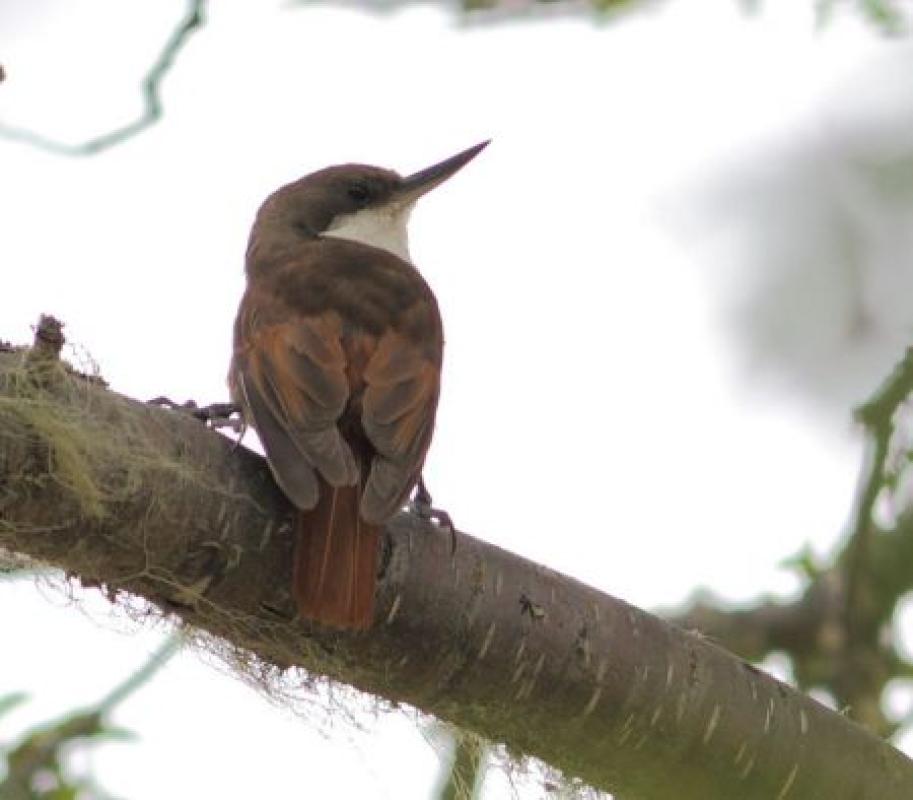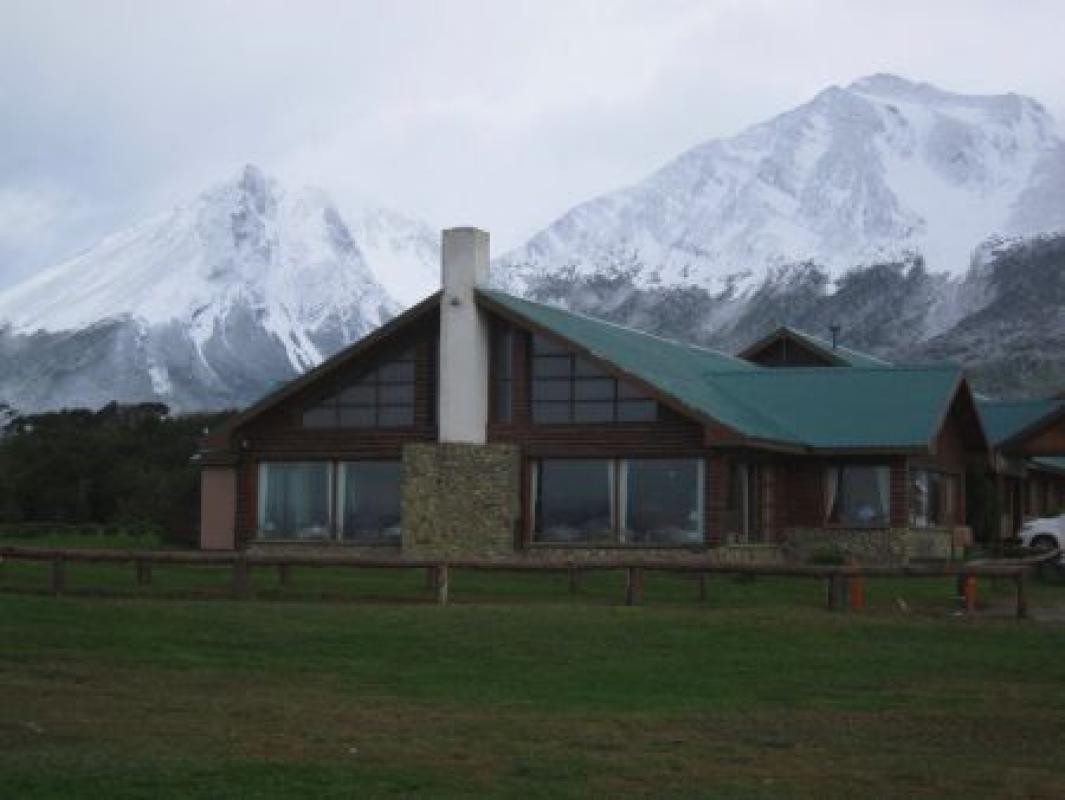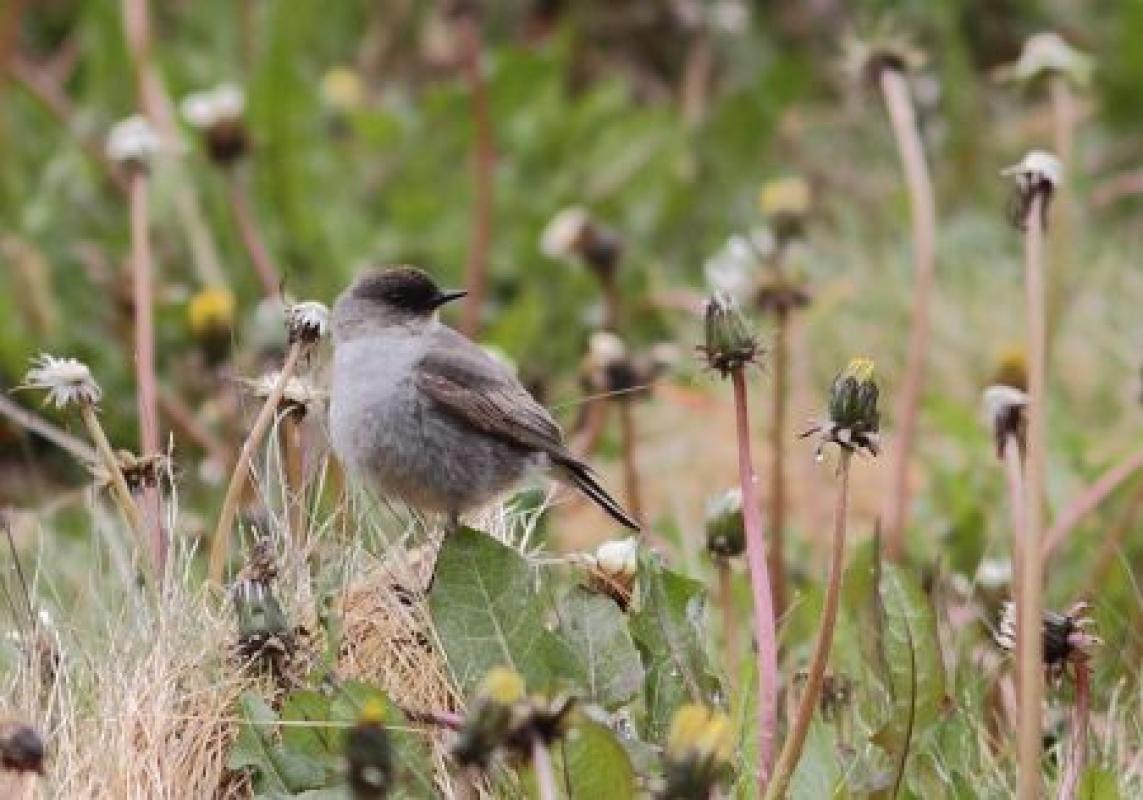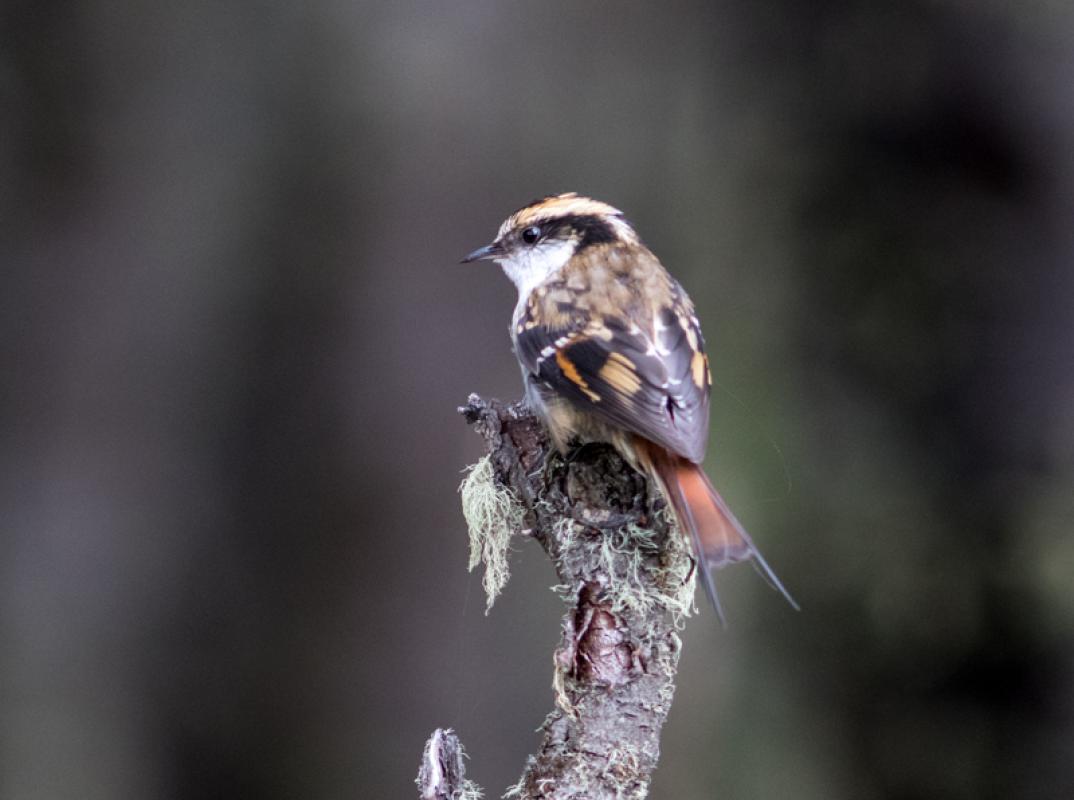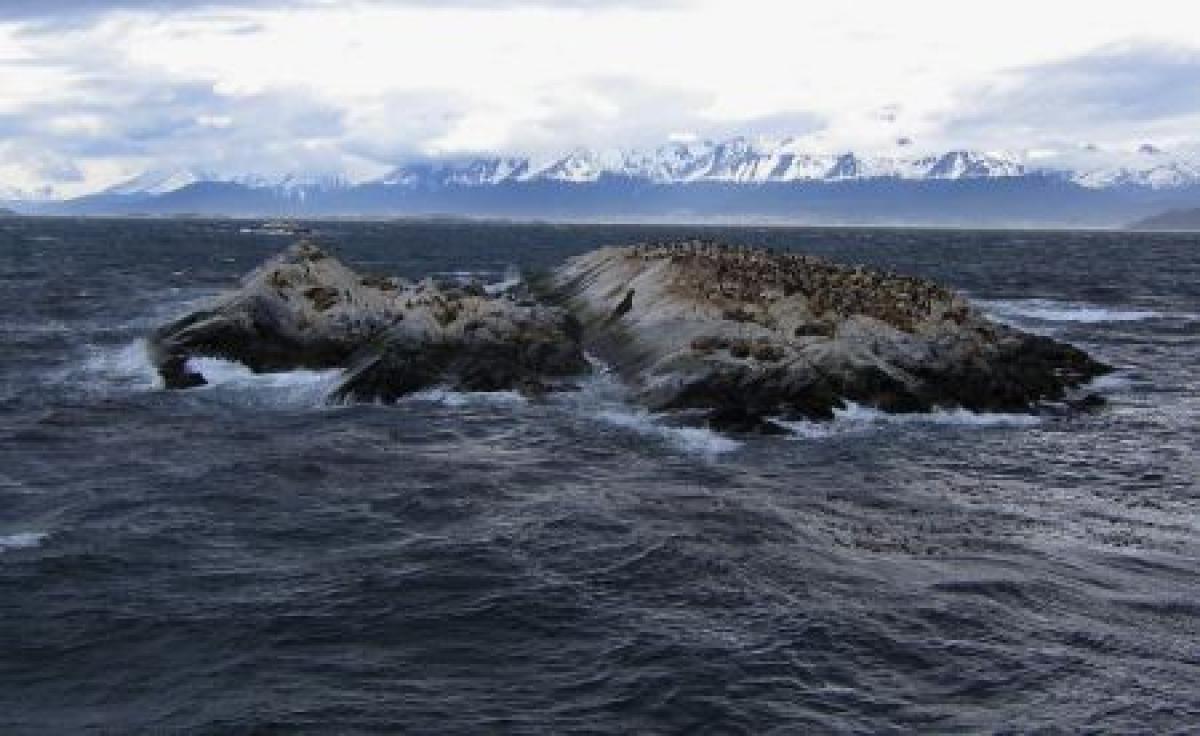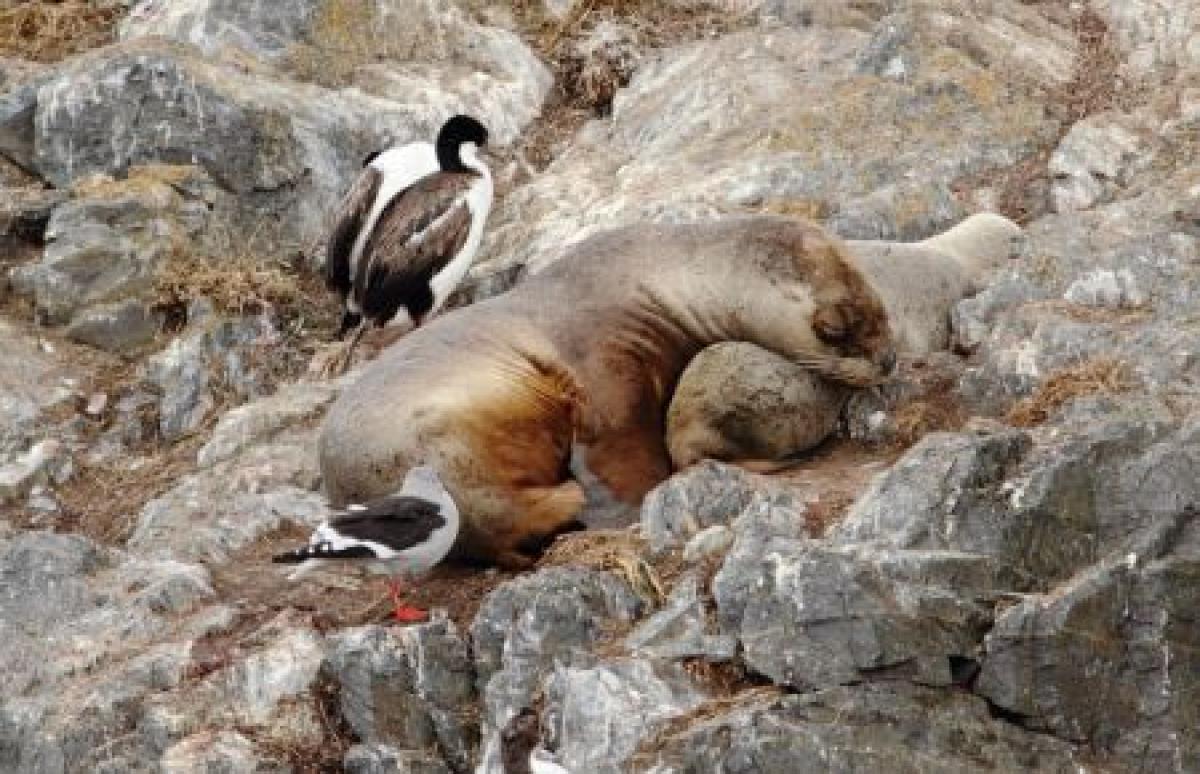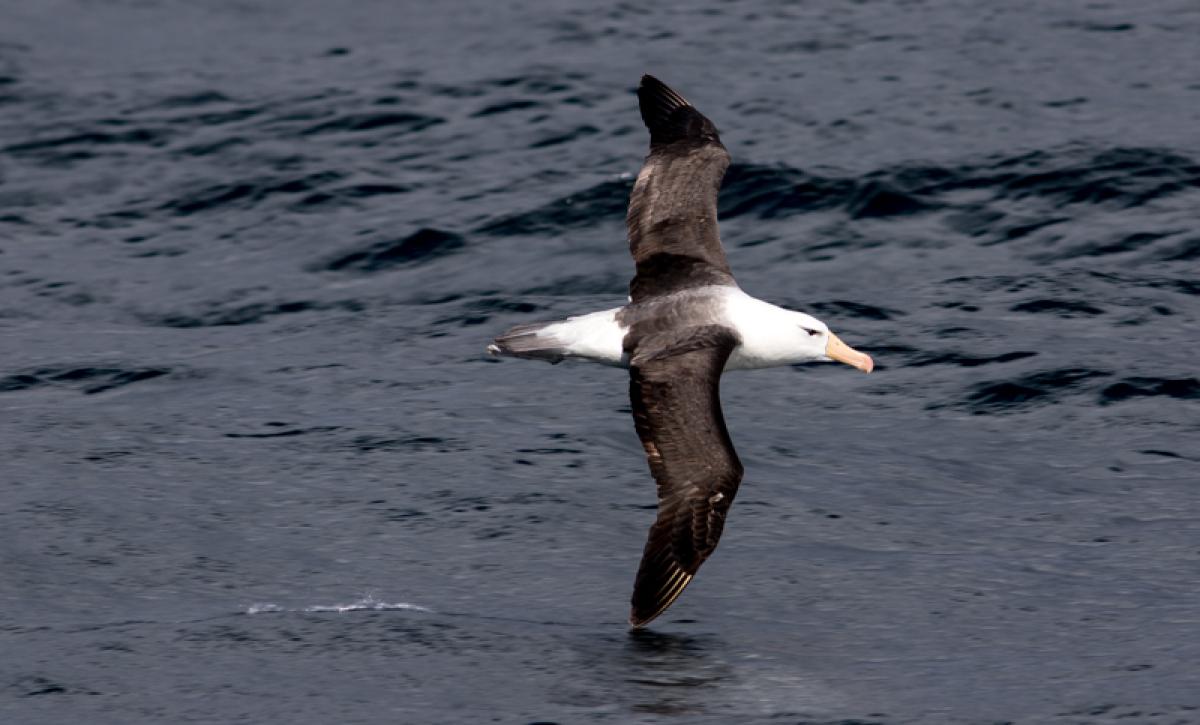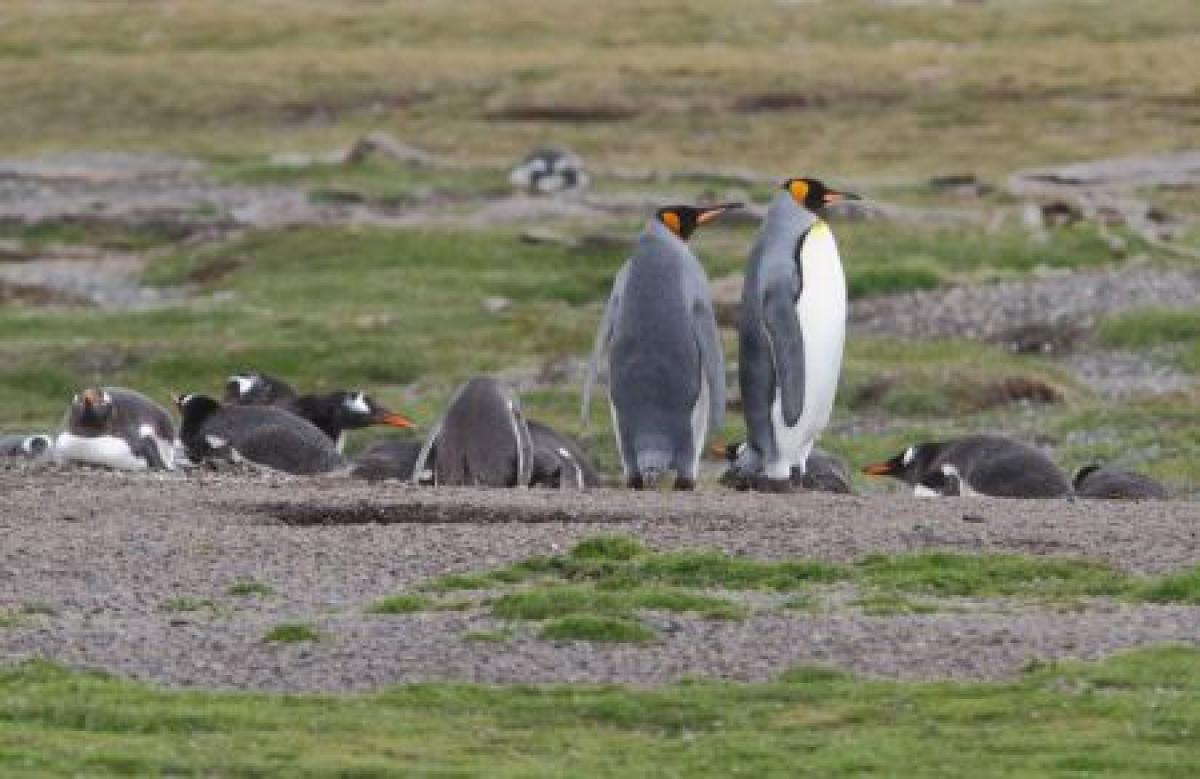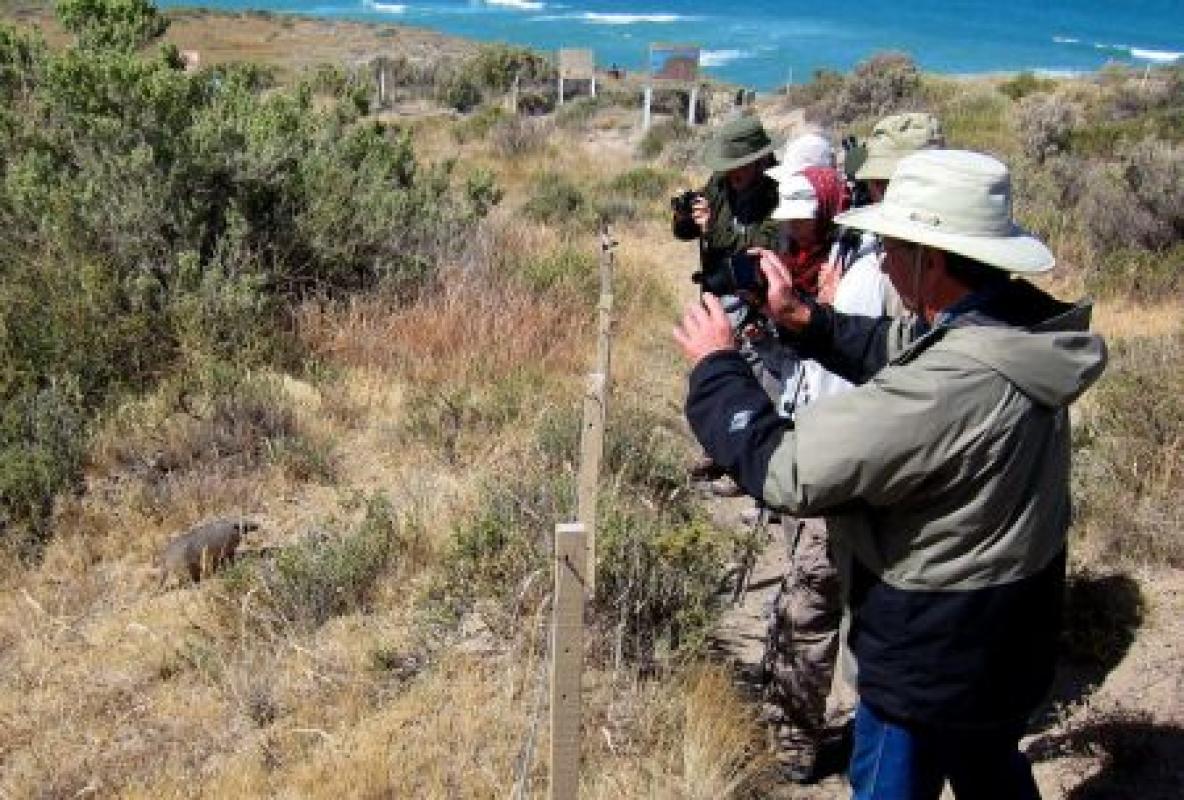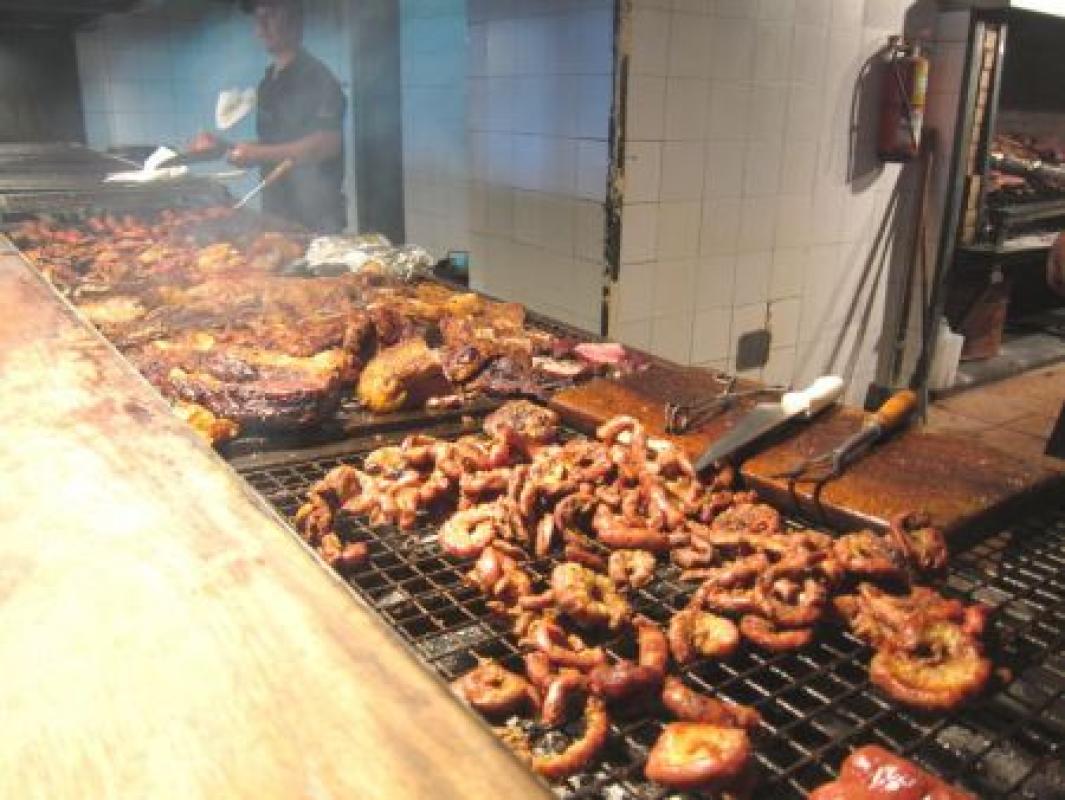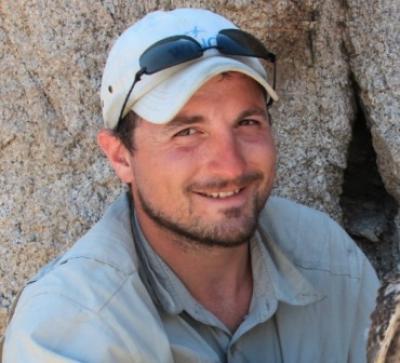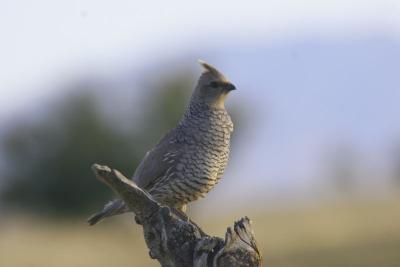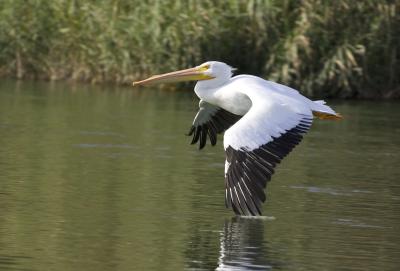Argentina: The South
Pampas, Patagonia and Tierra del Fuego
-
Jan 5-19, 2025
Jake Mohlmann and Mario Mosqueira
Argentina contains a greater variety of habitats than any other South American country. Stretching from the sub-tropical forests around Iguazú Falls to the sub-Antarctic island of Tierra del Fuego, the landscapes are as varied as one could wish, and the birds are similarly diverse. Our tour starts in the pampas southeast of Buenos Aires, home to countless waterbirds and raptors, and moves south to explore the Valdez peninsula, quintessential Patagonia with dry stony plains covered in xerophytic bushes and dotted with tinamous and rheas, remote shingle beaches that are refuge for elephant seals and sea lions, and colonies of seabirds. We’ll then visit Los Glaciares National Park to search the forests and steppes for birds ranging from seedsnipe to sierra-finches, and to marvel at the beauty of the Perito Moreno Glacier. Finally we’ll visit “the land of fire,” Tierra del Fuego, where we’ll look for Magellanic Woodpeckers in magnificent southern beech forests and sail down the Beagle Channel among albatrosses, penguins, and snow-capped peaks.
Argentina contains a greater variety of habitats than any other South American country. Stretching from the sub-tropical forests around Iguazú Falls to the sub-Antarctic island of Tierra del Fuego, the landscapes are as varied as one could wish, and the birds are similarly diverse. Our tour starts in the pampas southeast of Buenos Aires, home to countless waterbirds and raptors, and moves south to explore the Valdez peninsula, quintessential Patagonia with dry stony plains covered in xerophytic bushes and dotted with tinamous and rheas, remote shingle beaches that are refuge for elephant seals and sea lions, and colonies of seabirds. We’ll then visit Los Glaciares National Park to search the forests and steppes for birds ranging from seedsnipe to sierra-finches, and to marvel at the beauty of the Perito Moreno Glacier. Finally we’ll visit “the land of fire,” Tierra del Fuego, where we’ll look for Magellanic Woodpeckers in magnificent southern beech forests and sail down the Beagle Channel among albatrosses, penguins, and snow-capped peaks.
Day 1: The tour begins late morning in Buenos Aires. After lunch, we’ll visit the wetland reserve of Costanera Sur, established on reclaimed land very close to the city center. Depending on water levels, this reserve may hold a good selection of waterbirds, including White-tufted Grebe, Whistling Heron, Lake Duck, and sometimes the rather local Masked Duck. White-winged, Red-gartered, and Red-fronted Coots form groups and Plumbeous Rails nest among the aquatic vegetation. Nanday may join the flocks of Monk Parakeets that chatter in the surrounding trees. Night in Buenos Aires.
Day 2: This morning we’ll depart for San Clemente del Tuyu, a coastal resort southeast of Buenos Aires where we’ll spend two nights. Here we’ll explore many different habitats, including coastal, wetland, and pampas areas. Night in San Clemente.
Jake has all the attributes of an excellent leader. His bird finding skills are exceptional. He remains on top of all his responsibilities (the smooth functioning of transportation, accommodations, meals and so on). He manages to, quite effortlessly, stay attuned to the highly differing personalities, needs and expectations of all the clients. He is tireless in his role, endlessly positive and has a wonderful sense of humour. I felt very privileged to have been part of his tour.
Harry Scarth, Jan. 2018
Day 3: After an early morning visit to San Clemente harbor to look for the endangered Olrog’s Gull we’ll visit nearby Punta Rasa, an area of sand dunes and salt marshes rich in birds. On the sandy beaches and mudflats there could be flocks of waders, including American Oystercatchers and hundreds of White-rumped Sandpipers, large flocks of wintering terns, along with a few local Snowy-crowned Terns, and groups of graceful Black Skimmers. In the reeds and rushes around the salt marsh we may see Bay-capped Wren-Spinetail and Long-tailed Reedfinch. On the edge of town we’ll look for Firewood-gatherer, named after its habit of building enormous nests of dry sticks. In the afternoon we’ll explore the pampas areas just inland, where we should see a wide selection of pampas birds, such as Maguari Stork, Yellow-billed Pintail, Rosy-billed Pochard, Southern Screamer, Snail Kite, Guira Cuckoo, and possibly Scarlet-headed Blackbird. We’ll also search for Greater Rhea, Spotted Nothura, Silver Teal, and the elusive South American Painted Snipe. Night in San Clemente.
Day 4: We’ll depart early for a day with many stops, including at a reed-fringed canal where we’ll search for Stripe-backed Bittern, Black-headed Duck, both Curve-billed and Sulphur-bearded Reedhaunters, Wren-like Rushbird, Warbling Doradito, and Many-colored Rush-Tyrant. Our focus will be on finding species that inhabit the more wooded areas, including Dark-billed Cuckoo, Freckle-breasted Thornbird, and Black-and-rufous and Black-capped Warbling Finches. Long-winged Harrier may fly by as we look for Giant Wood Rail and any other pampas birds we may have missed during our time in San Clemente. We’ll return to Buenos Aires in the late afternoon for our flight to Trelew in northern Patagonia. Night in Trelew.
Day 5: In the morning we’ll visit the vast Magellanic Penguin colony at Punta Tombo. The colony is a reserve, but carefully roped-off walkways allow superb viewing and photographic opportunities. The bay beneath should hold a few Great Grebes in their attractive breeding plumage, and it’s here that we’ll look for the White-headed Steamer-Duck, a recently split species of very limited range. Southern Giant-Petrels cruise back and forth offshore, and a Brown (Southern) Skua could be scavenging amid the colony if the chicks are small enough. In the afternoon we’ll visit several bodies of water around Trelew with hopes of finding waterfowl such as Black-headed Duck, White-cheeked Pintail and, in most years, Silvery Grebes. Night in Trelew.
Day 6: After breakfast we’ll drive to Puerto Madryn, the gateway to the world-famous Valdez peninsula. En route we’ll probably see our first Elegant Crested Tinamous —by far the most obliging of the normally skulking tinamou family—and we’ll look for the unique Burrowing Parakeet, related to macaws and the only species in its genus. We’ll stop in the semi-desert scrub to look for a variety of small passerines, including the rather local White-throated Cacholote, which builds large stick nests, and we’ll watch out for the distinctive display flights of the Carbonated Sierra-Finch, an Argentinian endemic. We’ll end the day in nearby Puerto Piramides where we’ll spend two nights.
Day 7: Starting early, we’ll visit the desert near town to look for a variety of special passerines, including Scale-throated Earthcreeper, Patagonian Canastero, Plain-mantled Tit-Spinetail, and Lesser Shrike-Tyrant. Darwin’s Nothuras could be calling in the scrub, and if we are lucky we might spot one. After breakfast we’ll drive around the peninsula, stopping along the way to look for Darwin’s Rheas, the monte endemic Rusty-backed Monjita, Guanacos, Patagonian Foxes, and bizarre Patagonian Hares (Maras). Our destination is Punta Norte, where the beaches harbor Southern Elephant Seals as well as South American Sea Lions with newborn pups. On rare occasions Orcas are seen cruising up and down offshore. Night in Puerto Piramides.
Day 8: We’ll return to Trelew this morning and catch our flight to Ushuaia on the south side of Tierra del Fuego and adjacent to the spectacular Beagle Channel. We should arrive by midday, giving us ample time to explore the harbor, where Flightless Steamer-Ducks and Dolphin Gulls are both tame and common, and we’ll be able to study our first Kelp Geese and Chilean Skuas. This afternoon after checking in to our hotel, we’ll visit the mountains north of town to reach areas above treeline with a suite of unique birds. During the hike we’ll search for Yellow-bridled Finch and Ochre-naped and Dark-faced Ground-Tyrants, and we’ll have a very slim chance of finding a White-bellied Seedsnipe. Night in Ushuaia.
Day 9: We’ll spend the day in Tierra del Fuego National Park, a beautiful landscape of southern beech forests, lakes, and rivers. Here we’ll mainly be focused on forest birds, hoping to see the splendid Magellanic Woodpecker, Dark-bellied Cinclodes, White-throated Treerunner, Fire-eyed Diucon, Chilean Swallow, Austral Thrush, Tufted Tit-Tyrant, Black-chinned Siskin, Patagonian Sierra-Finch, and the delightfully entertaining Thorn-tailed Rayadito. Time will be spent exploring the southern beech forest around Acigami Lake in search of Austral Blackbird, Magellanic Woodpecker, Austral Pygmy Owl, or Magellanic Tapaculo. Returning to town in the afternoon, we may also visit the local trash dump, a reliable site for White-throated Caracara, along with scores of gulls and skuas. Night in Ushuaia.
Day 10: This morning we’ll cruise down the Beagle Channel. We’ll join others on a large catamaran for what will be primarily a boat trip, although from time to time we’ll pull up close to various islands inhabited by sea lions and seabirds. We should see graceful Black-browed Albatrosses along with giant-petrels and skuas. We may be lucky enough to see a Blackish Cinclodes, a recent colonizer to the islands at the mouth of Ushuaia Bay. We’ll stop at cormorant rookeries containing two different species, Imperial and Magellanic, and we’ll also encounter Dolphin Gulls and South American Terns. We’ll pull up on shore and overlook a Magellanic Penguin colony that, although small compared to those farther north, attracts other species of penguin from time to time. In recent years a small colony of Gentoos has become established here, and there is even the chance of a King! This afternoon we’ll begin our drive to Rio Grande, in the north of the island, where we’ll spend two nights. We’ll head out across Tierra del Fuego through spectacular mountain scenery with snow-capped peaks, forested slopes and glacial lakes. There are sites along the way for any of the species we might still be missing. Upon arrival in Rio Grande, we will stop on the edge of town to look for the elegant Rufous-chested Dotterel in the few remaining patches of original ‘tundra’ in this area. Night in Rio Grande.
Day 11: Today we can expect to explore the windy southern Patagonian steppe in search of regional specialties. We’ll make a morning trip north of town to look for the highly-endangered mainland Ruddy-headed Goose, the scarcest of the Choephaga geese in Argentina. We could see Tawny-throated Dotterels along the coast, and in the grassy dunes near the beach will search for Short-billed Miner. Other species we may cross paths with here are Chocolate-vented Tyrant, Least Seedsnipe, and Patagonian Yellow-Finch. Night in Rio Grande.
Day 12: Our last morning on Isla Grande, Tierra del Fuego we will catch a flight northwest to El Calafate. After checking in to our hotel we’ll visit the shores of nearby Lago Argentino to look for the delightful Magellanic Plover, a species in its own family, which pirouettes in the mud on bubblegum-pink legs. Other birds of interest are likely to include Chilean Flamingo, Cinereous Harrier, Crested Duck, Red Shoveler, Andean Duck, Magellanic Oystercatcher and Two-banded Plover. Night in El Calafate.
Day 13: We’ll spend the day visiting Los Glaciares National Park and the Moreno Glacier, a vast tongue of ice slowly descending from the Andes into Lago Argentino. The Perito Moreno Glacier has been designated a UNESCO World Heritage Site and is a major tourist destination in Argentina. We’ll visit the best viewpoints and may witness chunks of ice calve off into the lake below with a tremendous crash. En route to the glacier we’ll pass through magnificent southern beech forests, open meadows, and farmland, each home to a variety of birds. Highlights will likely include Black-faced Ibis, Ashy-headed Goose, Andean Condor, Black-chested Buzzard-Eagle, Austral Parakeet, Chilean Flicker, and the exotic Rufous-tailed Plantcutter. We’ll also have our best chance here for the scarce Spectacled Duck. Night in El Calafate.
Day 14: This morning we will spend more time exploring the vast landscape for any of our target species we may have missed the previous day. We’ll be searching for Austral Canastero, Great and Black-bellied Shrike-Tyrants, and Cinnamon-bellied Ground Tyrant and possibly Gray-belled Seedsnipes. In the afternoon we’ll return to El Calafate for our flight back to Buenos Aires. Depending on the flight schedule we may end up back in the capital with enough time for some local birding. Night in Buenos Aires.
Day 15: We’ll spend the morning visiting one of the productive riverside reserves north of Buenos Aires where we’ll search for Gilded Hummingbird, Checkered Woodpecker, Rufous-sided Crake, Spix’s Spinetail, Diademed Tanager and Solitary Cacique as well as renewing our acquaintance with other Pampas birds we have seen earlier in our trip. The tour concludes this afternoon in Buenos Aires with transfer to EZE for international departures.
Note: The information presented here is an abbreviated version of our formal General Information for Tours to Southern Argentina. Its sole purpose is to give readers a sense of what might be involved if they take this tour. Although we do our best to make sure that what follows here is completely accurate, it should not be used as a replacement for the formal document which will be sent to all tour registrants, and whose contents supersedes any information contained here.
ENTERING ARGENTINA: U.S. citizens are required to have a passport valid on the day of entry and with at least one blank page for an entry stamp. Visas are not necessary for visits of up to 90 days for tourism and business.
As of January 2018, citizens of the U.S., Canada, and Australia no longer need to pay a reciprocity fee, previously paid prior to their departure from home. Citizens of other countries should consult their nearest Argentine consulate for entry requirements. If required by the embassy or visa-granting entity, WINGS can provide a letter for you to use regarding your participation in the tour.
No vaccinations certificates are necessary in order to enter Argentina.
COUNTRY INFORMATION: You can review the U.S. Department of State Country Specific Travel Information here: https://travel.state.gov/content/travel.html. Review foreign travel advice from the UK government here: https://www.gov.uk/foreign-travel-advice and travel advice and advisories from the Government of Canada here: https://travel.gc.ca/travelling/advisories.
PACE OF TOUR: Argentina is a big country so we take several flights and make a few long drives. Typically we’ll have breakfast in our hotel between 6:00-7:00 a.m. (occasionally earlier or later) and then spend the day in the field usually with a picnic lunch and occasionally with a sit-down restaurant meal. Where possible we’ll offer the chance to take time off, but every day offers a full program of birdwatching activities from early morning until approximately 1 hour before dinner, which usually begins at 8-8:30 p.m.
Our tour isn’t particularly strenuous as most of the areas we visit are fairly flat but it does involve some moderate to long walks (½ – 2 mi). Those who want to try for Yellow-bridled Finch, and ground-tyrants in Ushuaia will need to undertake a steep hike uphill through some fairly uneven terrain, sometimes through snow. If you usually use hiking poles, bring at least one. Collapsible versions work best for storage in luggage and minibuses. The less sure-footed in the party might choose to opt out of this excursion. Argentinean eating hours and habits are different from American ones. Breakfasts tend to be skimpy - often just coffee, toast or a croissant, and butter and jam. Lunches won’t be a problem as many will be picnics. Dinners, however, don’t fit well into our tour schedule. Argentineans eat late. Most restaurants don’t open until 8:00 p.m. and few Argentineans enter them until 9:00 p.m. or later. Meals are regarded as social occasions where friends and family eat slowly and discuss the day’s events, so service is often slow, as that is what most people want. The leaders will always explain to restaurant staff that our group wants to eat early and quickly and this usually works (often we leave the restaurant just as other diners are starting to appear) but be prepared for the occasional slow meal or late finish.
HEALTH: The Centers for Disease Control and Prevention (CDC) recommends that all travelers be up to date on routine vaccinations. These include measles-mumps-rubella (MMR) vaccine, diphtheria-tetanus-pertussis vaccine, varicella (chickenpox) vaccine, polio vaccine, and your yearly flu shot.
They further recommend that most travelers have protection against Hepatitis A and Typhoid. Please contact your doctor well in advance of your tour’s departure as some medications must be initiated weeks before the period of possible exposure.
Altitude: The Pampas and Valdez Peninsula sections will be at sea level. The elevation in Ushuaia/Rio Grande will range from sea level to 2,500 feet when hiking above treeline. In the Calafate section we will be at around 650 feet in elevation when close to the glacier.
Malaria: According to the CDC, the areas that we will be visiting are free of malaria. As the situation changes fairly quickly please contact your physician for the latest advice 4-6 weeks before the start of the tour.
The current information about travelers’ health recommendations can be found on the CDC’s Travel Health website at https://wwwnc.cdc.gov/travel/destinations/traveler/none/argentina.
Smoking: Smoking or vaping is prohibited in the vehicles or when the group is gathered for meals, checklists, etc. If you are sharing a room with a non-smoker, please do not smoke in the room. If you smoke in the field, do so well away and downwind from the group. If any location where the group is gathered has a stricter policy than the WINGS policy, that stricter policy will prevail.
Miscellaneous: Biting insects are not numerous although mosquitoes, black flies and chiggers occur locally; certain mosquito species in Argentina are known to transmit dengue fever, and travelers are advised to check the CDC website for updates.
CLIMATE: Weather in Southern Argentina can vary tremendously from warm and humid in the Pampas and sunny to very cold and wet, especially in Patagonia. Days can be very windy with daily rain possible in Tierra del Fuego, which has a sub-Antarctic climate.
ACCOMMODATION: We’ll be staying in good quality hotels or lodges throughout. All rooms will have a private shower and toilet.
Internet and Mobile Phone Access: Our hotels have reasonably good Wi-Fi connections, though this can vary from year to year. Mobile phone access is very good near our lodging locations but can be null when in the field.
FOOD: Food in Argentina is excellent with meat being a feature (but not a requirement.)
Drinks: Bottled water and/or: a soft drink, a small beer, or small glass of wine is provided at lunch and dinner, as is coffee or tea. All additional drinks or ‘personal’ drinking water for use in your room, etc., are the responsibility of the individual. Bottled water is available in our vehicles during the day.
Food Allergies / Requirements: We cannot guarantee that all food allergies can be accommodated at every destination. Participants with significant food allergies or special dietary requirements should bring appropriate foods with them for those times when their needs cannot be met. Announced meal times are always approximate depending on how the day unfolds. Participants who need to eat according to a fixed schedule should bring supplemental food. Please contact the WINGS office if you have any questions.
TRANSPORTATION: We’ll travel in minibuses or small coaches with local drivers. For the times that we are transferring between sites or going to the hotel or airport, we will use mini-buses where it is possible that some particiants may be in the middle seat rather than by a window.
When we use more than one vehicle during the tour there will always be a leader in each vehicle. You must be able to ride in any seat in our tour vehicles.
2023 Narrative
In Brief: Argentina boasts the largest variety of habitats of any country in South America and we did a fantastic job covering as much of four of them as possible.The monte desert around Puerto Madryn awarded us endemic species like roadside Rusty-backed Monjitas and Carbonated Sierra Finches in full display mode. On the shores of the massive Valdez Peninsula the Southern Sea Lions were giving birth and Southern Giant Petrels and Snowy Sheathbills were taking advantage of the ephemeral food source provided by this amazing event. The extensive pampas grasslands and marshes were overflowing with ducks and shorebirds seeking shelter in this resource-abundant habitat. Highlights here included the regional specialty Olrog’s Gull, the range-restricted Hudson’s Canastero, and a delicious parrillada cooked by a local gaucho. Patagonia provided wind rushing through the endless steppe habitat and harbored Tawny-throated Dotterels, as well as both adult and young Magellanic Plovers foraging on the turquoise waters of Lago Argentino. Our boat trip from Ushuaia down the Beagle Channel took us by nesting colonies of thousands of Imperial Cormorants, up close to passing Black-browed Albatross, and ultimately views of both Magellanic and Gentoo Penguins. The Perito Moreno Glacier in Calafate thundered as active calving of massive ice chunks was experienced, along with views of a highly sought-after Magellanic Woodpecker utilizing ancient southern Beech Trees, and a family group of Spectacled Ducks mere meters away. In all, 244 species were seen well by the group as we embarked on an unforgettable trip through the southern cone of South America.
In Detail: Immediately upon gathering we headed east out of Buenos Aires towards the mouth of the Rio de la Plata. We got to know each other and go over what the tour had in store as we drove along the nice highway leading out of town. At our picnic lunch, replete with the Argentine staples empanadas and tortillas, we were joined by the now appropriately named Grayish Baywing bringing food to a nest, bright Rufous Horneros (which happen to be the national bird of Argentina) and the ubiquitous Rufous-collared Sparrow. Along the next leg of our journey a complete surprise first appeared as a dot in the sky and eventually materialized overhead. We quickly pulled over when we noticed a huge black bird with forked tail soaring over the grasslands and were shocked to see a pair of young Magnificent Frigatebirds slowly gaining altitude and eventually disappearing into the ether. A nomadic seabird was the last thing we expected in the vast waving grass scene laid out before us. Continuing southeast we passed by Argentina’s largest bird, the Greater Rhea. There was a small group of males slowly strolling through the shin-high grass amongst the much more numerous cattle. At one point a stately male Long-winged Harrier was even with the bus, and we calculated they flew at approximately 35 kilometers per hour. Our driver screeched to a halt to point out some roadside Spotted Nothuras creeping through the manicured verges, and we observed one nearly become a splatted nothura! (Luckily it dodged an oncoming pickup.)
On the approach to San Clemente, we crossed numerous tidal rivers that were at the perfect level to host thousands of feeding shorebirds. Over 1,000 White-rumped Sandpipers poked the muddy surface scurrying in amongst the slightly less numerous Lesser Yellowlegs. Another long-distance migrant, the Hudsonian Godwit, was admired in its non-breeding plumage attending the feeding flocks. Tall Black-necked Stilts of the white-necked variety had no trouble stepping over the shorter feeding birds to pick bugs off the surface of the riverbanks. Several duck species gave us good views including Silver Teal (with its two-toned bill) and great comparison views of the similar-looking Yellow-billed Pintail and Yellow-billed Teal. A particularly confiding Maguari Stork was photographed standing on a dirt hill right next to the road, allowing us to literally see the whites of its eyes and bright red facial skin that anyone would be jealous of.
The area around San Clemente is surrounded by large private estancias, one of which allows us access to its inner reaches and the marshes it protects. As soon as we got into the entrance gate large herds of Monk Parakeets were picking through the seeds left by dried cow dung and Spot-winged Pigeons drank from the cattle tank, shoulder-to-shoulder with the multi-colored bovines. A Campo Flicker sat atop a snag with its bright golden chest glowing in the sun and eventually flew in over our heads and landed in close proximity to the closely related Green-barred Woodpecker family that was nearby. The display flight of Yellowish Pipit revealed their presence as they flew high and came floating down with their loud ‘zeeeeeeeer’ calls. The more numerous Correndera Pipits were much easier to see and were constantly flushing from the road as our van proceeded through the pampas. The dry, open fields here harbored a hundred or more American Golden Plovers foraging for insects in short bursts through the turf. A more methodical shorebird was weaving amongst them and finally revealed itself: a single Buff-breasted Sandpiper feeding with its larger plover cousins! Other shorebirds studied closely in the marshes here included Pectoral Sandpipers and Wilson’s Phalaropes, both of which are also very long-distance migrants who winter in this fertile landscape. Giant Southern Screamers were in flocks, as well as the dark long-legged White-faced Ibis. Although the area was very dry this year, any small patch of water yielded a Plumbeous Rail working the shoreline. A male Double-collared Seedeater alerted us to its presence with its beautiful song. Flocks of Brown-and-yellow Marshbirds were constantly stirring around the reeds. Our final excitement here was seeing an astounding Black-and-rufous Warbling Finch that showed us its beautiful plumage from every direction. In a nearby town, we were treated to a traditional Argentinian asado replete with beef ribs and succulent skirt steaks. It wouldn’t be a trip to this country without enjoying this type of meal with the gauchos. We stopped at a large stick nest placed carefully in a treetop that had a Firewood Gatherer’s head sticking out. Late in the day we drove out to the tip of Punta Rasa, a reserve that protects a large portion of salt marsh where the River de la Plata meets the Atlantic Ocean. Not only does marsh life abound here, but it can also be a good vagrant trap for any wayward bird that gets caught along the seaside. A flurry of foraging gulls and terns attracted our attention, so we got up close and personal with several Common Terns diving onto schools of tiny fish with lots of Brown-hooded and Kelp Gulls. Royal and Snowy-crowned Terns were also picking through the fish flock as the tide was heading back out to sea, and several Gray Hooded Gulls were loafing on the beach. In the shimmer in the distance, we could see two birds: one very dark and one very light, sitting off by themselves being antisocial. The dark bird was a main target for this area – Olrog’s Gull, odd with its dark hood only shared with the similar looking Belcher’s Gull on the Pacific Coast in Chile. The white one turned out to be a complete surprise Snowy Sheathbill that somehow found its way to what is likely the most northerly point this species is ever recorded. Before leaving this area, we were able to pick out a yellow-billed “Cayenne” Sandwich Tern amongst the flock, going over differences in the subspecies of this interesting Atlantic seabird. We strolled through the pampas grass clumps and salt grass where we heard a chirping call. A pair of Freckle-breasted Thornbirds popped out of the marsh and eventually made their way to their well-constructed stick nest in one of the few bushes in the area. Another prime target here was a Long-tailed Reedfinch that came within 30 feet of us and somehow managed to perch precariously with its legs out at 90-degree angles from its body, giving a perfect performance of how birds are able to perch on whatever upright vegetation may be available to land on.
First thing the next morning we strolled through an area of town that tends to be good for hummingbirds and much to our delight, we nailed all three expected species within ten minutes of each other. The stunning bright blue male Glittering-bellied Emerald shined with red bill and black tip, a golden-hued Gilded Hummingbird fed from some flowers, and a regional White-throated Hummingbird chased away any others for the best spot at a leaky irrigation stand. Some raucous calls drew our attention away from the hummer show so we made our way over to a family of Gray-cowled Wood-Rails that were having a turf war. Two families were chasing each other into and out of a dense stand of bamboo right past our feet, completely unbothered by our presence. Near town we slowly walked through the marshes and eventually worked a Bay-capped Wren Spinetail out of hiding for some great looks at this easily concealed individual. The genus for this bird is Spartinoica, given for this bird’s affinity for Spartan grass with the same name. We checked some other wetlands in the area and enjoyed watching the colorful Many-colored Rush Tyrants fly back and forth across an opening, eventually coming to almost arm’s length of the group. A Warbling Doradito also came in to see what the fuss was all about. Several Striated Herons worked the muddy shoreline and a Black-crowned Night Heron flushed from the reeds. A good duck popped into view as we watched two pairs of Black-headed Ducks swim across the open water. In the large bunch grasses a pair of Sulphur-bearded Reedhaunters blurted out their songs and briefly perched up for good views. Strolling along a different road awarded us with point blank views of male and female Bearded Tachuris, an odd little flycatcher that lives in the wind-swept grasslands of northeast Argentina, and the near-endemic Hudson’s Canastero, a large canastero of the grasslands with streaky back and loud rattly song.
Next we flew to El Calafate, a picturesque town nestled into the side of the sizeable Lago Argentino. Our first stop was at a local wetland preserve where we began to familiarize ourselves with the local avifauna of the southern Southern Cone. We took time to go over the subtle details between differentiating Lake and Andean Ducks. Further north 1,000 miles separate the two species, but here in the south their ranges overlap and it can be confusing to tell apart. The ‘chunk chunk’ calls of Black-faced Ibis rained from overhead as these odd-looking birds came soaring in. Lots of Chilean Flamingos swept their heads through the rich waters as gorgeous Red Shovelers fed right alongside them. Long-tailed Meadowlarks perched atop poles showing bright red front and white eyebrows well, with one coming particularly close as it brought food into its awaiting young in the nest. The prickly calafate bushes harbored the secretive Sharp-billed Spinetail we saw well, and a pair of Tufted Tit Tyrants came in to investigate us. Although this species is a small package, it’s quite beautiful with black streaked chest and wispy crest blowing in the wind. The breezy day was not only good for seeing the numerous Chilean Swallows shoot by for insects, but also both male and female Cinerous Harriers working the marshes, sometimes coming very close overhead like fighter pilots. The lakeshore here abounds with tiny Austral Negritos shooting back and forth in the froth, hunting for insects and the long-winged Baird’s Sandpipers picking through the gravelly edge.
The next morning, we were treated to a dream morning. We walked out a sandy spit off into the turquoise waters of Lago Argentino in search of one of the most wanted birds of the trip. Just before getting out of the van a Dark-faced Ground Tyrant was spotted flitting back and forth down the shoreline trying to distract us from our intended goal. We were quickly met by a pair of local dogs who ended up keeping us company for the next hour or so. As we strolled in the early rays of the day, flocks of Baird’s Sandpipers were flushing out of our way. A rock suddenly moved and revealed the artfully cryptic Least Seedsnipe creeping through the perfectly matched substrate and allowed us all to get very close for stunning pictures. A pair of Flying Steamer Ducks was loafing at the end of the spit and as we were checking them out in the scope, a small fluffball went head over feet right next to us. We speculated that this could be the chick of our target the Magellanic Plover. It was surprising to us to see such a small chick to be wandering around by itself; we searched hard for any adults nearby and eventually found pair of bubblegum pink legged adult plovers tending to another larger chick further down the beach. Given the pair’s tie to the helpless chicks, we sat still and watched as they all came within feet of the group foraging along the wind-swept shoreline. After we finished relishing in this experience, we began heading west towards Los Glaciares National Park. En route we made a stop at some roadside vegetation that yielded the odd cotinga, Rufous-tailed Plantcutter, sitting high in a bush observing the numerous observers. Nearby a picturesque lagoon fringed with reeds and shrubs hosted another specialty of the area; it didn’t take long to hear the trilling song of the Austral Canastero being bleated out from the hillside.
Los Glaciares NP protects an impressive 7,200 square kilometers of gorgeous habitat. We were greeted at our first stop in the park by a pair of Austral Parakeets visiting what was likely their nest. It was odd that when there were no people around, the parakeets were nowhere to be seen, but when a busload of people arrived the birds would mysteriously appear. A melodious song from a snag was from an Austral Blackbird. It eventually joined a flock of 8 that foraged around the picnic area for any crumbs left behind by untidy tourists. The magnificent Perito Merino Glacier stretched out for miles to the west connecting to the massive southern ice cap. This sheet of ice covers nearly 16,500 square kilometers and straddles the border of Chile and Argentina. From one particularly stunning overlook, a male Patagonian Sierra Finch popped into view and kept playing hide-and-seek with our group. In a bay to the north, we were shocked to see a family group of seven Spectacled Ducks loafing close to shore. Some people were able to walk right up to this normally reclusive species and capture some photos that were undoubtedly some of the best ever taken. (Usually, we see this bird from a mile away in the scope so seeing it this close was an unforgettable experience.) Tapaculos are typically some of the most difficult birds to see. Fortunately, the Magellanic Tapaculo we encountered dispelled that rumor and quickly showed up and flitted back and forth under our feet below the grated walkaway. We searched high and low for Magellanic Woodpecker and in classic birder lore we ended up seeing two males and a female in the parking lot. Our driver alerted us to the area he had just seen one fly into, so we sat there until we were able to watch one come in. The flaming head of the male glowed in the sun as it sat atop a dead tree while nearby the female, looking completely different but just as snazzy, sat motionless on a mossy branch.
The old road to the national park is dusty and rutted but can be very exciting for birding. Almost immediately we stopped to check out a field with a few Cinnamon-bellied Ground Tyrants shooting back and forth grabbing insects. A large Black-billed Shrike-Tyrant whistled its song from a transmission line in the early morning light and several long-billed Scale-throated Earthcreepers chased each other around the soccer pitch. In the seemingly barren flats, a pair of Common Miners were in full display. The male flew up chattering his song and came floating back down, giving the nearby Correndera Pipits some competition for who had the best aerial dance. In the slopes of the sheer cliff faces we sauntered upslope into an area with an old building that was a magnet for new species. When we pulled up there were both Black-billed and Giant Shrike-Tyrants on the roof, as well as a pair of Buff-winged Cinclodes chasing each other in hot pursuit. From the high hillsides we were able to coax in a Cordilleran Canastero, as well as Rufous-banded Miner distracted from its own display show. An odd ‘whoop whoop whoop’ sound alerted us to a gorgeous male Gray-bellied Seedsnipe way up on the hill. Lucky for us he decided to come and plop right down next to the group, acting valiantly for the female that was no doubt nearby. We checked a spot that we randomly found an Austral Pygmy Owl last year and much to our surprise it was in the same tree as last time! The most astonishing part was the habitat was large shrubs and dusty hillsides without a single southern beech tree in sight, the more typical habitat where this species occurs. Who knows, maybe it’s evolving into yet another species of pygmy owl? After our empanada lunch we headed north along the famed Route 40, a lengthy stretch of road extending 5,000 kilometers from the Bolivian border to the southern tip of South America. A side road here seemed completely devoid of life, and mostly was, save for a flock of Common Diuca Finches we happily stopped to observe. While there Mario randomly played the tape for another target bird that popped up almost immediately: a Band-tailed Earthcreeper, an Argentine near-endemic, ran across the ground with tail cocked in typical fashion. We saw a hole in the side of the road nearby and wondered if perhaps this was where this flighty furnariid was nesting.
The next morning, we jetted southeast to the scenic port town of Ushuaia and quickly north back into the wind-swept plains surrounding Rio Grande, the second-largest city on the island of Tierra del Fuego. We stopped for a quick lunch along the shores of the memorable Lago Fagnano while enjoying the company of several Chiloe Wigeon, Yellow-billed Pintail and some confiding Upland Geese. The dusty roads leading out of Rio Grande offered excellent roadside views of Least Seedsnipe with the males adorned in their black bowties, and Two-banded Plovers with bright rusty caps and double chest bands. A small flock of Patagonian Yellowfinches shot off the road but left behind a very curious youngster that sat for ten minutes allowing very close inspection by the group. At the massive estancia Los Flamencos we were treated to a pair of Ruddy-headed Geese that were acting wary. Eventually we realized why when a group of four fluffy chicks emerged from the edge of the pond they were sitting by. There are perhaps 400 or so of these birds left on mainland Argentina so we felt lucky to see such a rare species. Short-billed Miners were flushing from the roadsides, and we enjoyed studying a pair up close as an adult kept on feeding its recently-fledged young.
We drove south and watched as the open windy steppe slowly turned into southern beech forest and into new territory around Ushuaia, the capital of the iconic Tierra del Fuego Province. This town, situated at the base of the Martial Mountains, provided a suite of birds seen only in this region. We stayed in perhaps the best hotel in the world for seawatching, on the banks of the Beagle Channel. Daily from the hotel we tallied Kelp Goose, Chilean Skua, Dolphin Gull, Magellanic Oystercatcher, and both Flying and Flightless Steamer-Ducks. It was a real treat to be able to observe these birds at our leisure whenever we came back to the hotel at the end of the day. One morning we hiked up to the base of the Martial Glacier and were entertained by the antics of a Thorn-tailed Rayaditos scurrying up and down the towering trees. Above tree line, the vega bogs host another selection of avian delights. A confident male Yellow-bridled Finch landed within a meter of our group and posed for a few minutes, allowing a photographic frenzy and a fantastic experience with this cryptic finch. Some other interesting ground flycatchers that were utilizing these bofedales were the compact Dark-faced Ground Tyrants, as well as a Buff-winged Cinclodes working the cascading stream in the glacial canyon bottom. A quick trip nearby after lunch produced multiple White-throated Caracaras and dark “Dusky” subspecies of the Black-crowned Night Heron.
We explored Tierra del Fuego National Park with its stunning snow-capped peaks and old-growth beech forest. Patagonian Sierra Finches foraged alongside the bright yellow Black-chinned Siskins. We strolled along Lago Roca and on what was previously a Great Grebe nest watched a pair of Spectacled Ducks slink into the water from the floating pile of grass and twigs. We couldn’t believe our luck yet again with this species that is normally very hard to see on this tour. Just downriver we eventually did find the family of Great Grebes. A pair of adults were taking care of some fluffy looking young. We tried long and hard to see the White-throated Treerunner and proved once again that the effort would pay off. At our last likely place to find it, we managed to see a family group of this nuthatch-like ovenbird as it crept around the dead branches of the nathofagus trees.
Our boat trip down the Beagle Channel was epic, not only because the water was flat calm, but because new birds were constantly being added against the backdrop of the wind-swept mountains the area is named for. Numerous Black-browed Albatross floated by along with cinnamon-colored Chilean Skuas, while nesting colonies of Magellanic and Imperial Cormorants numbered into the thousands. Several Snowy Sheathbills wandered through the colonies of cormorants and we watched as one tried its best to tear into a recently deceased young Imperial Cormorant that had succumbed to the elements. A recent colonizer to the islands here is the Blackish Cinclodes that we saw very well as it came to drink the fresh water from the boat’s windshield wipers! The penguin colony at the end of the line was filled with not only thousands of Magellanic Penguins, but a bunch of breeding Gentoo as well with dark fluffy young constantly begging for food.
Aerolineas Argentinas once again swept us away, this time far north to the town of Trelew. This city is perfectly located to put us in close reach to the famed Valdez Peninsula and Punta Tombo colony of Magellanic Penguins. Immediately upon arrival we were whisked away in our Sprinter van and headed north to Puerto Madryn. We checked an ephemeral water spot near the entrance to town and noticed a unique looking Cinnamon Teal with bold white eye rings and white base to the bill, as well as flocks of Wilson’s Phalaropes, Chilean Flamingos and Brown-hooded Gulls. We ate our picnic lunch at a different lagoon in town in the company of Lesser Yellowlegs, Black-necked Stilts, and Southern Martins coming in for a quick drink. As we strolled around enjoying Chiguanco Thrushes and Picui Ground Doves, suddenly all the Southern Martins began to fuss and swirl about as a Peregrine Falcon darted in, attempting to nab any unwary shorebirds. The martins weren’t having it and began dive-bombing and actually hitting the falcon, forcing it to leave prematurely. In one area near town, we were able to observe a pair of endemic White-throated Cacholote defending their stick nest site. Near the coast two parakeets were seen sitting overhead on a power line so we slammed on the brakes and were delighted to realize they were Burrowing Parakeets, and unusual bird that nests in limestone caves nearby. Just before turning east towards the Valdez Peninsula, we made a spot to try for another Argentine endemic. It wasn’t long before the pulsating rise and fall of the male Carbonated Sierra Finch’s song could be heard. There ended up being at least three males displaying, and even though it was quite windy here it didn’t deter the male birds from continuing their aerial maneuvers. This lek-like performance was great to observe.
We took an entire day to explore the barren Valdez Peninsula that juts well out into the Atlantic Ocean. In the nice habitat just after leaving town, our first close roadside juvenile Variable Hawk atop a shrub made us stop and observe this buffy bird rip apart its prey at eye level. We thought the food may have been one of the many Elegant Crested Tinamous we’d been seeing scurrying off the roadside. While here we got out and were immediately distracted by a couple of Patagonian Canasteros as they trilled their songs while tending to their thorny stick nests. A common species along our route was Patagonian Mockingbird, seen consistently during our drive around the peninsula’s edge. It didn’t take long after we began driving again to see our first of many Lesser (Darwin’s) Rheas. We could sense their confusion as we watched them frustratingly trying to navigate the sheep fences that separate the estancias peppering the landscape. In one of the few wet areas, we spotted the striking endemic Rusty-backed Monjita as it foraged in plover-like fashion, running in brief spurts then stopping and standing tall. In this area numerous Barn Swallows had us wondering whether they were the resident birds that fairly recently established a resident population in Argentina, or perhaps long-distance migrants from North America we were familiar with from back home. Our eagle-eyed driver picked out a Darwin’s Nothura trying its best to blend into the clumps of grass strewn about the roadside.
At Punta Cantor we overlooked a herd of mixed Southern Elephant Seals and South American Sealions taking refuge on the beach. Southern Giant Petrels floated by at eye level and also gorged on a couple of dead sea lions floating in the surf. Luckily, we spotted the red-tipped bill of a Northern Giant Petrel in the mix, and also noted it looked bigger than its Southern cousins. Our first Magellanic Penguins were trying to make the tough decision of whether to come or go from the water and showy Great Grebes dove into the crystal-clear waters of Caleta Valdez. Along the next stretch of road, the habitat became various-colored cobble stone and the van began swaying along the road with this particular substrate never getting compacted. Although tough to drive through, it turned out to be the perfect camouflage for a group of Tawny-throated Dotterels that started roadside, but watched eventually make their way in short bursts of runs out towards the sea. This was a special experience for the group because we had been looking for this species the entire trip so far and finally got our quarry, and also for me personally because the first and last time I’d seen dotterels here was with David Fisher ten years ago. At Punta Norte, we watched Southern Sea Lions giving birth and were amazed at the spectacle of ravenous bird behavior we witnessed. The Kelp Gulls were lying in wait for this event to happen and immediately would consume the afterbirths turning their yellow bills blood red. American Oystercatchers flew by in flocks whistling all the way. An extremely confiding Hairy Armadillo came within hands reach to see if any tourists were going to ignore the ‘do not feed the animals’ signs.
We traveled to Pyramid Point to observe the giant male Southern Sea Lions and their harems of females. Magellanic, Imperial, and Neotropic Cormorants took refuge on the rock promontories, as did several tern species including red-billed Royal, black-capped South American, and yellow-billed Sandwich. This type of Sandwich tern, referred to by some as Cayenne Tern, breeds off the coast of Brazil and disperses to the mainland coast afterwards. We even had a surprise Common Tern flap by, much further south than its normal wintering range. High-pitched whistling calls revealed numerous Blackish Oystercatchers blending in nicely with the dark rocky coastline that suddenly would fly by at eye level in small groups in a sort of loud whistle competition. Before leaving town, we took one last stroll through the scrubby landscape and were rewarded with a smoky Gray-bellied Shrike-Tyrant high atop a transmission pole. On the way back to Trelew we made one last attempt to get the group Lesser Shrike-Tyrants and succeeded, with a bonus view of yet another Band-tailed Earthcreeper for a cherry on top! One last stop bagged us a curious Yellow-billed Tit-Tyrant foraging right alongside a pair of Tufted Tit-Tyrants, another of our favorite species from this tour with their wispy crests and bold personalities for such a tiny flycatcher.
The few isolated patches of fresh water around Trelew contained another smattering of waterfowl and we enjoyed Rosy-billed Pochards, a sleeping Silvery Grebe, and the nest parasite Black-headed Duck. We appreciated good comparison views of Yellow-billed Pintails floating right alongside Yellow-billed Teals teaching us the subtle differences in these similar-looking fowl. Nearby a pair of White-cheeked Pintails were noted not far from some foraging White-faced Ibis. The shallow waters here also host a good number of Chilean Flamingos, some of which flew by quite close for picture opportunities. We scoped a surprising number of shorebirds amassing on the shorelines here, with good numbers of Hudsonian Godwits and both Lesser and Greater Yellowlegs. Some small sandpipers running around the group turned out to be a bunch of Stilt Sandpipers. Not exceedingly rare to North American birders, but at this location, it was perhaps 250 miles south of where this species normally winters. In the same vein of odd shorebirds for the location, a few Pectoral Sandpipers foraged slowly in one of the nearby flooded fields.
We headed south along National Route 3 towards the Patagonian coastline with a brief stop to see a nesting Lesser Horned Owl, a recent split from Great Horned Owl told apart by its much paler facial disks among other things. The famed Punta Tombo was our destination where tens of thousands of Magellanic Penguins nest. The adult-sized young were in constant begging mode, harassing the parents returning from their oceanic feeding to try to induce the regurgitation of shrimp and anchovies, their favorite food source this time of year. We slowly walked through the bushes and would occasionally hear a sneeze which would then reveal the location of the sometimes perfectly-hidden burrows. Death is inevitable in colonies like this so it was no surprise to see Kelp Gulls and Chimango Caracaras picking apart an unlucky young penguin that had perished in the baking heat. A couple pairs of the endemic White-headed Steamer Ducks slept on the mossy rocks just offshore. This massive duck species is restricted to the rocky central Patagonian coast of Argentina. We observed several pairs in defense display while they swam out into the ocean with heads bobbing and belting out their odd calls.
The next morning, we checked out the fertile Chubut River Valley which flows from the Andes on the western side of Argentina, east through the steppe and monte desert, finally to its outflow into the Atlantic Ocean. Normally we don’t have time to check out this bird-rich area, so perhaps it is no surprise we were able to add a few new species to the overall trip list. First was a covey of California Quail that, although not a native species, were just as good looking as where they normally occur. Several White-tailed Kites were seen hunting over alfalfa fields and the concentration of Burrowing Owls here was staggering. Straneck’s Tyrannulet was called in at a pond edge for views of this monte-endemic, and a male White-tipped Plantcutter wailed his zipper calls from a large willow tree. We thought it was odd we couldn’t get a picture of it without a stick in front of its face, but then soon realized it was because he was carrying it in his bill, bound for the nest he was likely working on. The nearby Welsh community of Gaiman harbored a nice population of West Peruvian Doves which have been making their way successfully from Chile and are now a common breeder in the area. In a park in town an adult Blue-and-yellow Tanager came in for inspection with its young of the year right behind it. We caught word of some investigative work of hummingbirds that were coming to some feeders in Trelew. We got permission to enter a private community and managed to find a White-throated Hummingbird still in the area. This is a common hummingbird much further north, but exceedingly rare in the barren surrounds of the central Argentina Coast. Before heading to the airport, we enjoyed a seafood lunch in the port town of Rawson and spent our last half hour watching the fishing boats come into port with thousands of Kelp Gulls picking at the refuse tossed overboard, and very close looks at some buffy-necked Great Grebes diving for minnows. Just before arriving at the airport a fly-by Harris’s Hawk shot over the van and proved to be the only one of this species seen on the tour.
Our final morning was spent exploring the splendor of some of the urban wetlands around Buenos Aires. We were easily entertained by a family group of Rosy-billed Pochards struggling their way through the water lettuce. An adult bird was slowly leading the way while a dozen small chicks hopped in unison following closely. Other birds walking over the floating veg were Spot-flanked and Common Gallinules, as well as many Wattled Jacanas, some with tiny fluffball versions of themselves close for protection. We called in a Yellow-chinned Spinetail that finally showed us its namesake. A distant group of Snail Kites flew in from above, with one eventually landing in the marsh for great eye-level views. A small flock of birds was highlighted by a Streaked Flycatcher sitting motionless in the subcanopy, and a querulous group of Golden-crowned Warblers coming in to see what the fuss was about. At the nearby Costanera Norte reserve a flock of 35 Nanday Parakeets flew in as soon as we left the vehicle landing on nearby light posts and trees allowing close inspection of their black hoods. We tested our luck with getting good views of one of the several Rufous-sided Crakes working through the dense marsh and got some looks from overhead after a while. A confident Dusky-legged Guan walked across the path right in front of us with red throat glowing in the sun. We watched a perched Gilded Hummingbird in the scope belt out its gritty song. A Narrow-billed Woodcreeper slowly worked the tree bark looking for insects and a nearby Bran-colored Flycatcher was nice to see. Some other birds added right up to the moment we had to pull ourselves away for the day were White-winged Becard, White-crested Tyrannulet, Chivi Vireo, and the small but courageous Masked Gnatcatcher.
This fantastic group of participants got along extremely well and made for a very smooth tour that was a pleasure to lead. The assorted scenery was changing constantly, as were the birds we encountered. These factors made for an exciting endeavor that I can’t wait to experience again on next year’s tour.
- Jake Mohlmann
Jake has all the attributes of an excellent leader. His bird finding skills are exceptional. He remains on top of all his responsibilities (the smooth functioning of transportation, accommodations, meals and so on). He manages to, quite effortlessly, stay attuned to the highly differing personalities, needs and expectations of all the clients. He is tireless in his role, endlessly positive and has a wonderful sense of humour. I felt very privileged to have been part of his tour.
- Harry S. on Argentina: The South
Jake was phenomenal! His ability to hear, see, locate, and identify all the birds we encountered was the best I have ever encountered in decades of birding (I now have a life list slightly over 3,000 birds). I would also be remiss if I didn't mention the great contributions by Mario! All in all, this was a truly great all-round trip, not just birding. Spectacular scenery, interesting culture.
- Robert H. on Argentina: The South
Locations and pace were awesome. Excellent WINGS and local guides!
- Charlotte O. on Argentina: The South
Wow! Incredible to experience fabulous birding and so much of a huge country. Jake and Mario were excellent. Knowledgeable and skilled birders. Relentlessly (and respectfully) pursued our target birds. They knew where to look to maximize our time. Patient, thoughtful, and thorough teachers. Responded quickly and effectively to the challenges of international travel amid changing COVID requirements. They did so much "behind the scenes" to ensure everything went smoothly. Excellent support from drivers and local guides.
- Valerie B. on Argentina: The South
Jake is just a phenomenal tour leader; a truly unique combination of incredible birding skills and equally incredible human skills. Ditto for Mario. Their familiarity and experience with the area and the birds, and their incredibly thoughtful and thorough attention to planning and logistical details, made the birding aspects of the trip superbly successful. And the easy, caring, and fun way they interact with each other, each person in the group, the other local guides and drivers who assisted in various locations, and all the other people we interacted with on the trip, made the trip so comfortable and just plain fun. Our local guides Sebastian and Esteban were also exceptional - they added such an important flavor and dimension to the portions of the trip we shared with them.
- Carla D. on Argentina: The South
Jake is the Ambassador for the birds of Argentina. In that role, he combines his birding expertise with his phenomenal organizational skills to create a truly exceptional experience for WINGS clients. I was very impressed by his birding and teaching skills. He is relentless in his pursuit of the birds we all came to see. In addition, no detail of the itinerary was overlooked. He listened to everyone and never disregarded a request or suggestion.
Mario was absolutely tireless in his quest to make the experience smooth and rewarding. He never stopped working to make sure we saw as many birds as possible, was relentless in helping get us through airports, and thoughtful on all the accommodations and food venues. Mario and Jake are an exceptional team!
Erin is beyond organized. She always responds quickly and precisely to questions! Thank you.
- Jean-Christophe B. on Argentina: The South
Maximum group size eight participants with one tour leader; 10 participants with two leaders.

